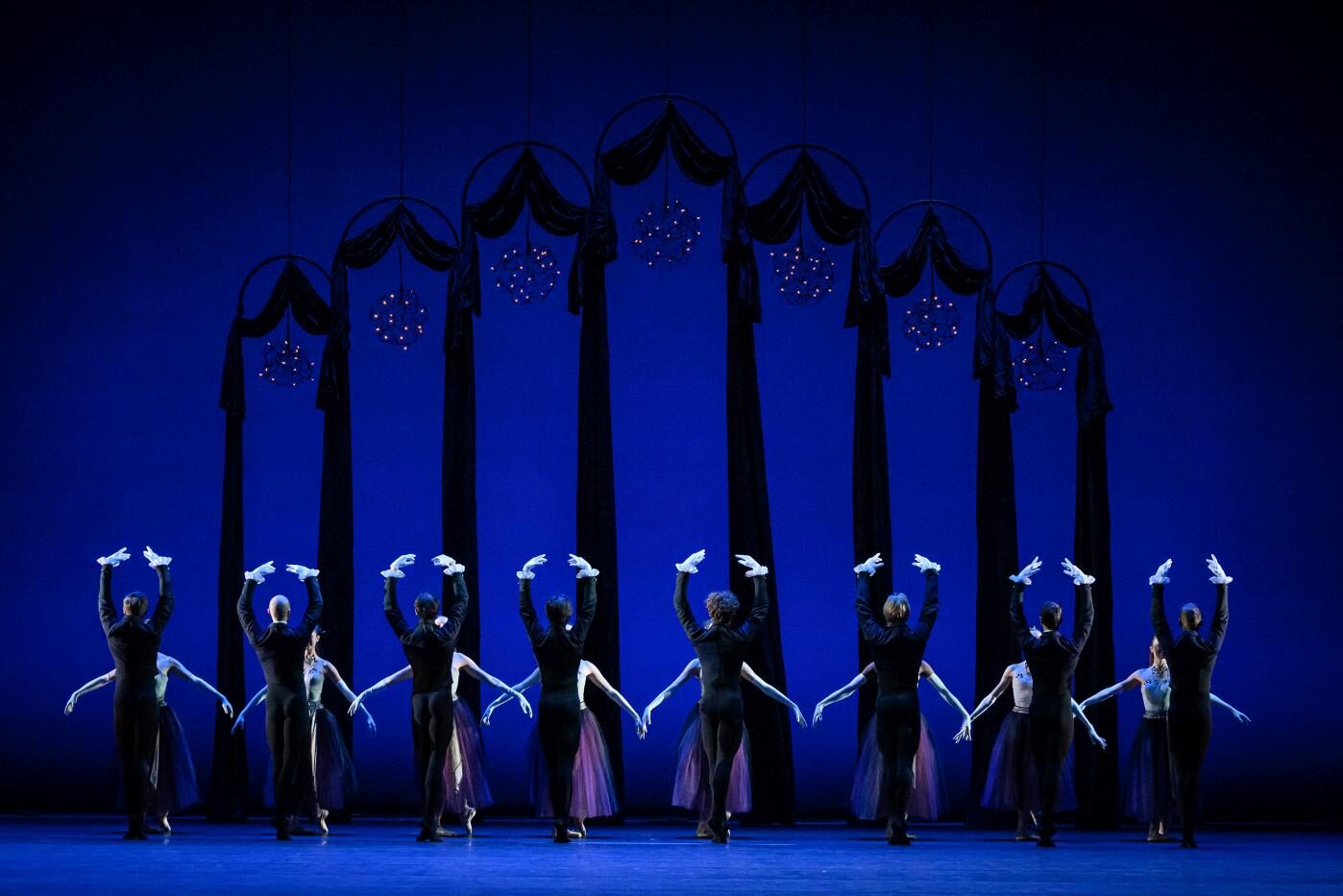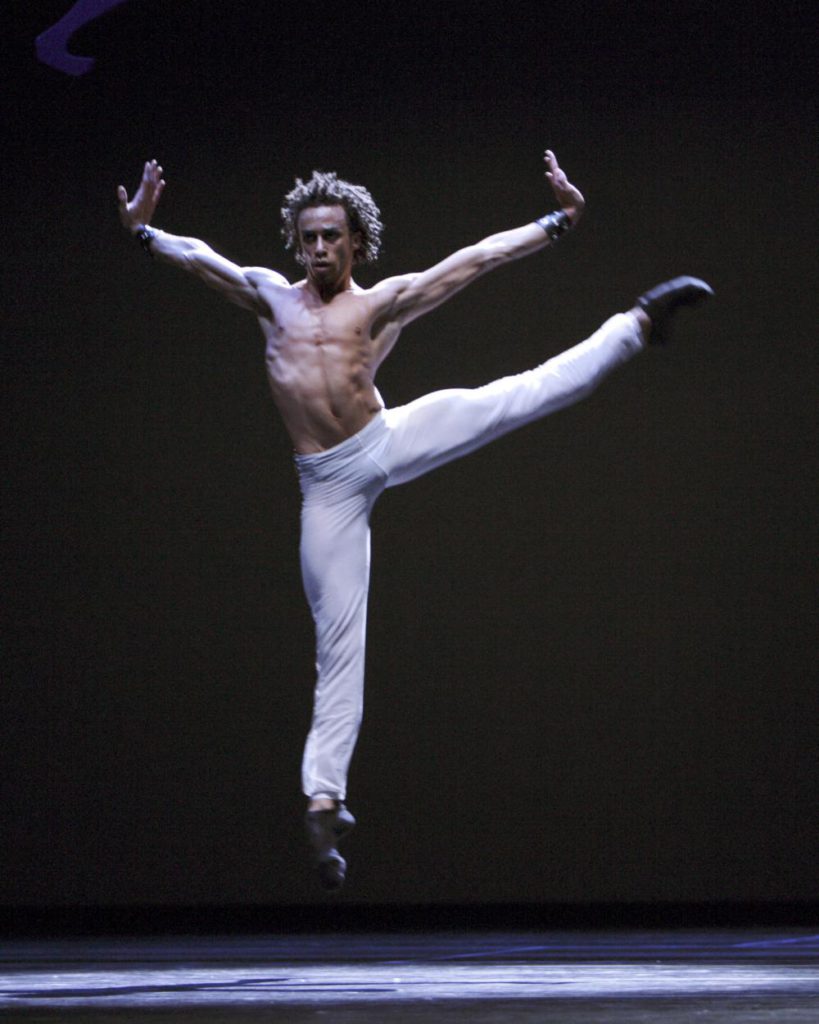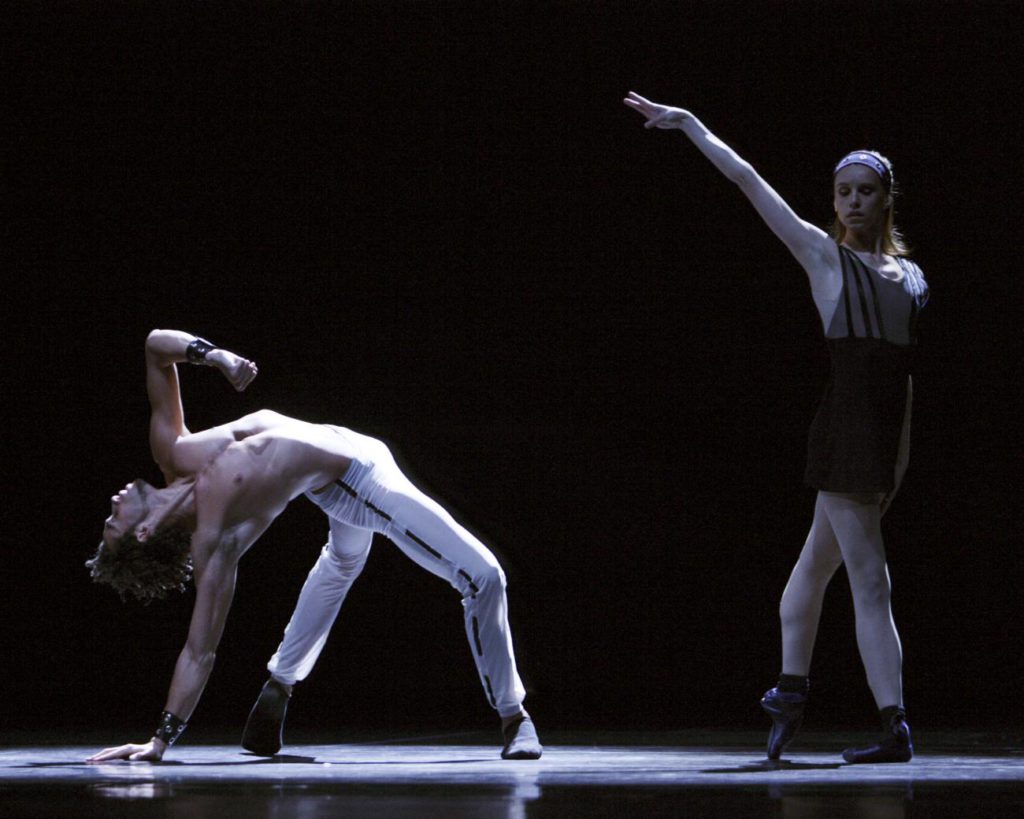Dutch National Ballet
Amsterdam, The Netherlands
February, 2017
by Ilona Landgraf
Copyright © 2017 by Ilona Landgraf
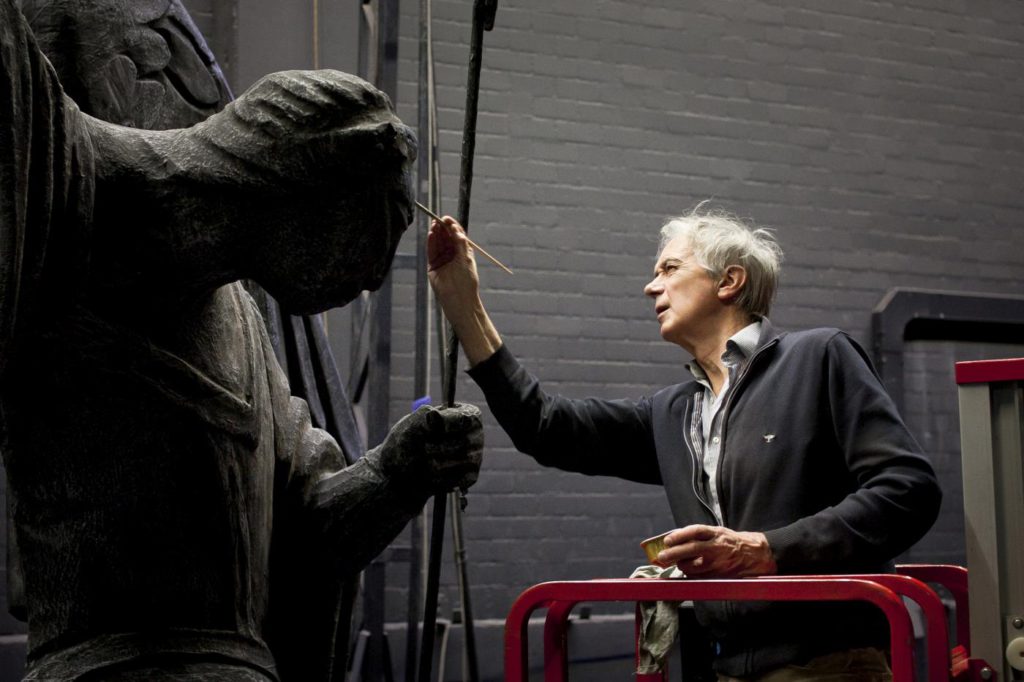 Dutch National Ballet has been shaped by a troika of “van”: Rudi van Dantzig, Hans van Manen and Toer van Schayk, three fellow countrymen of roughly the same generation. Van Dantzig (1933 – 2012) became the company’s resident choreographer shortly after it emerged out of the Amsterdam Ballet and Nederlands Ballet fusion in 1961. He later co-directed the troupe for two decades before holding the director’s post. Since then, Hans van Manen, the Dutch doyen of choreographers, has created work for the company for more than forty years. Eighty-four-years old and still choreographing, he is internationally renowned.
Dutch National Ballet has been shaped by a troika of “van”: Rudi van Dantzig, Hans van Manen and Toer van Schayk, three fellow countrymen of roughly the same generation. Van Dantzig (1933 – 2012) became the company’s resident choreographer shortly after it emerged out of the Amsterdam Ballet and Nederlands Ballet fusion in 1961. He later co-directed the troupe for two decades before holding the director’s post. Since then, Hans van Manen, the Dutch doyen of choreographers, has created work for the company for more than forty years. Eighty-four-years old and still choreographing, he is internationally renowned.
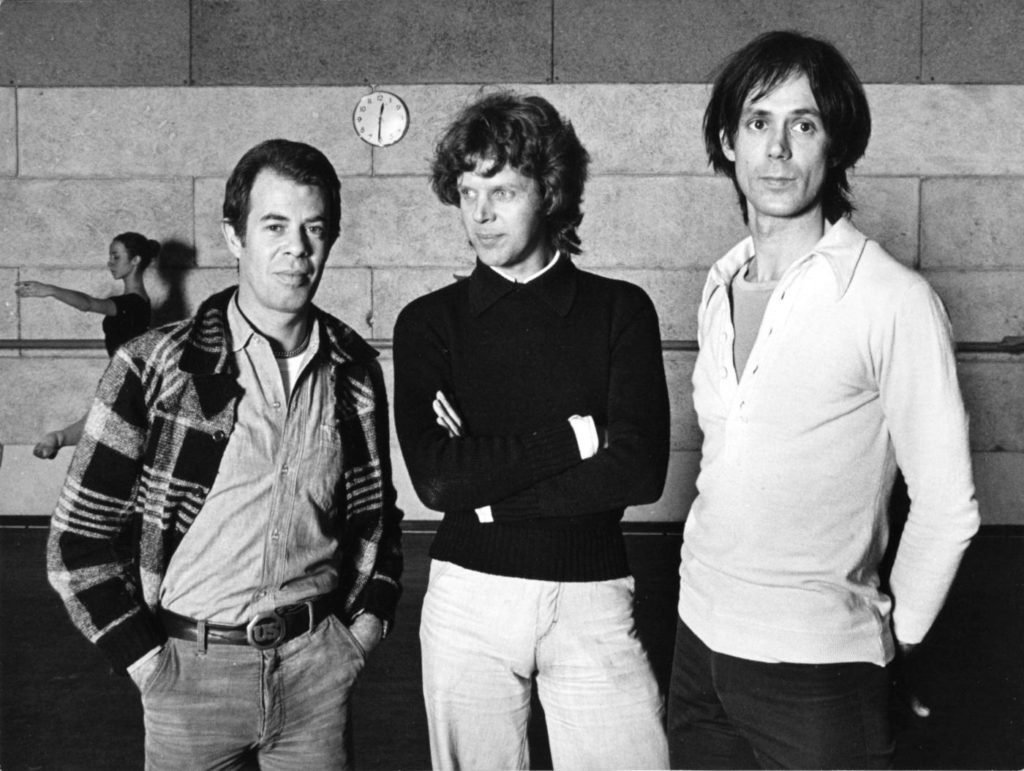 Van Schayk’s name is lesser known outside the Netherlands, yet he is the most eclectic artist of the threesome. His creative spectrum spans dancing, choreographing, set and costume design, painting and sculpting. Though officially retired, Van Schayk choreographed a new pas de deux, “Episodes van Fragmenten” for this season’s opening gala in September, the month he celebrated his 80th birthday. In the same month he was granted the honor of Officer of the Order of Orange-Nassau by the Minister of Culture.
Van Schayk’s name is lesser known outside the Netherlands, yet he is the most eclectic artist of the threesome. His creative spectrum spans dancing, choreographing, set and costume design, painting and sculpting. Though officially retired, Van Schayk choreographed a new pas de deux, “Episodes van Fragmenten” for this season’s opening gala in September, the month he celebrated his 80th birthday. In the same month he was granted the honor of Officer of the Order of Orange-Nassau by the Minister of Culture.
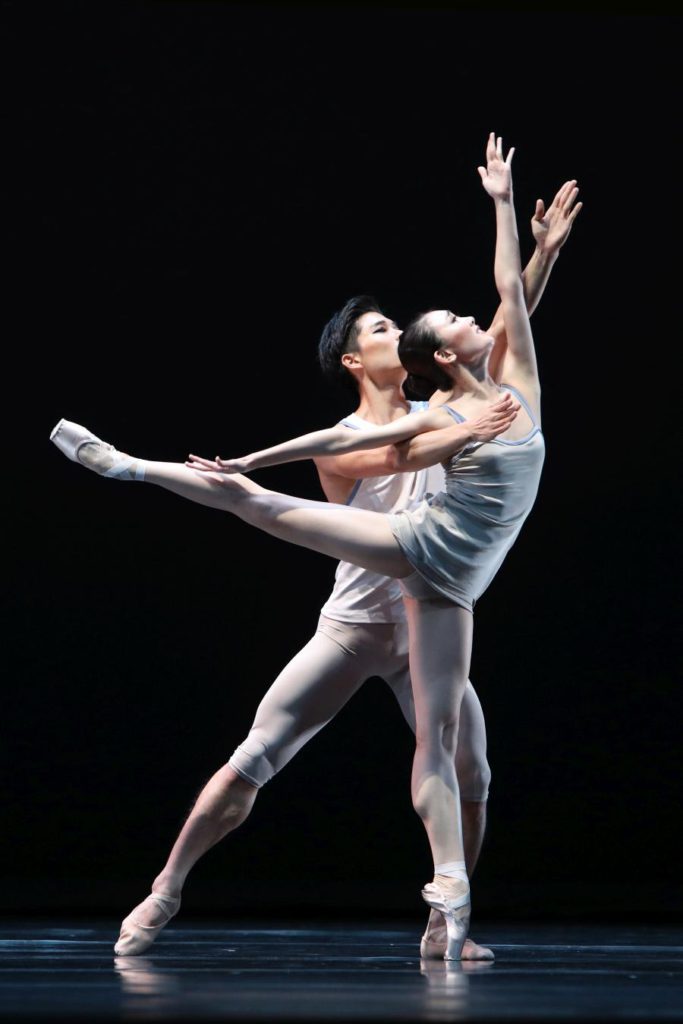
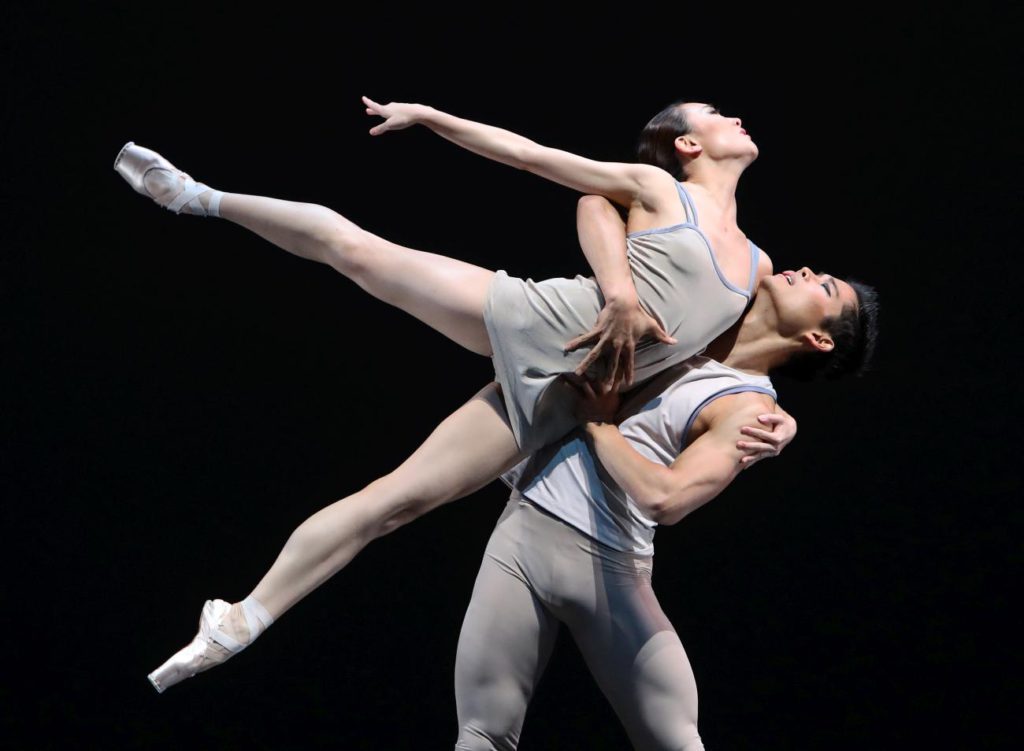 I met Toer van Schayk during the international Ballet Conference in Amsterdam a few weeks ago. After just finishing a rehearsal with the Dutch National Ballet’s Junior Company, he took some time to talk with me about his career and the art of ballet in general.
I met Toer van Schayk during the international Ballet Conference in Amsterdam a few weeks ago. After just finishing a rehearsal with the Dutch National Ballet’s Junior Company, he took some time to talk with me about his career and the art of ballet in general.
Van Schayk‘s responses are in italics. Please click on the photos to enlarge them.
Last September Dutch National Ballet revived your “Requiem” set to Mozart’s music of the same title. It addresses the destruction of creation. You returned to this topic throughout your career. How did that come about?
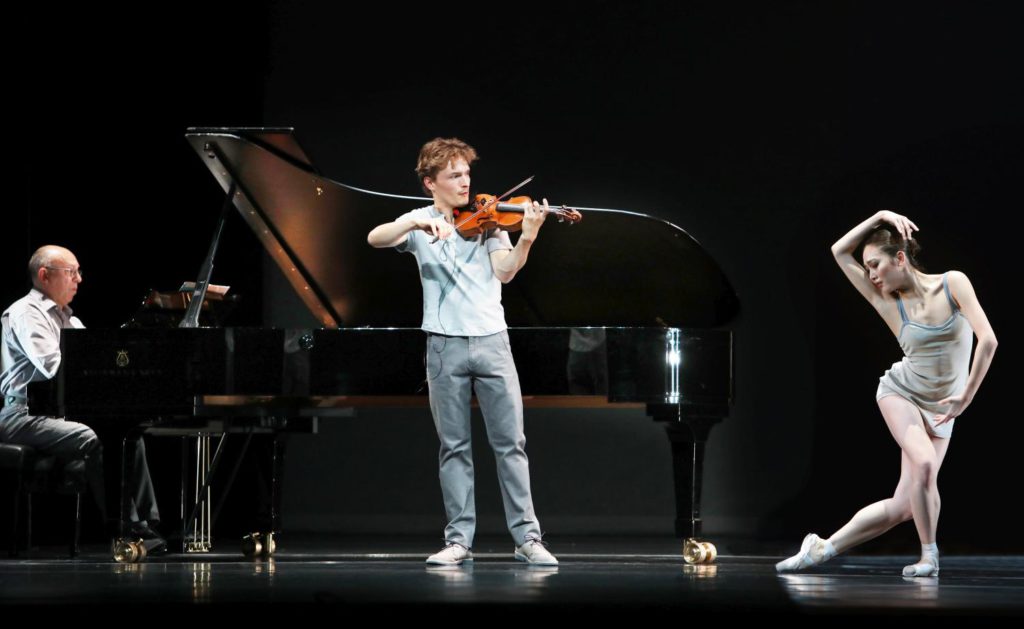 It all coincided when I was doing my first choreography. It was the same time in the late 1960s that the publication of the Club of Rome and the MIT report came out. Everybody had always thought that whatever you do, nature is strong enough to survive anything. Suddenly the whole world, or at least I, started to realize that this isn’t the case at all, that we were busily destroying nature. That affected my first work [“Imperfect Past Tense”] and it has become a line throughout my career. In 1990 in “Requiem” I brought this points forward, also using some film clips. At this season’s revival I had the feeling the audience was much more with it than at its time of creation. This whole issue has become so much more clear to people in general that I was overwhelmed by the success the piece had this time.
It all coincided when I was doing my first choreography. It was the same time in the late 1960s that the publication of the Club of Rome and the MIT report came out. Everybody had always thought that whatever you do, nature is strong enough to survive anything. Suddenly the whole world, or at least I, started to realize that this isn’t the case at all, that we were busily destroying nature. That affected my first work [“Imperfect Past Tense”] and it has become a line throughout my career. In 1990 in “Requiem” I brought this points forward, also using some film clips. At this season’s revival I had the feeling the audience was much more with it than at its time of creation. This whole issue has become so much more clear to people in general that I was overwhelmed by the success the piece had this time.
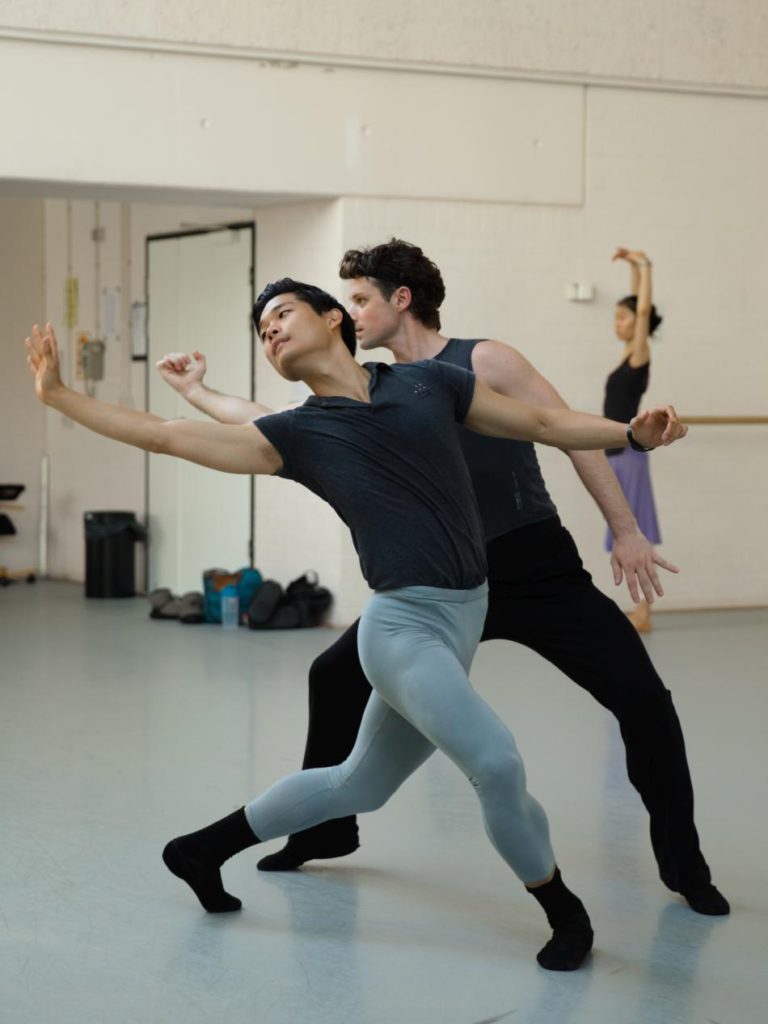
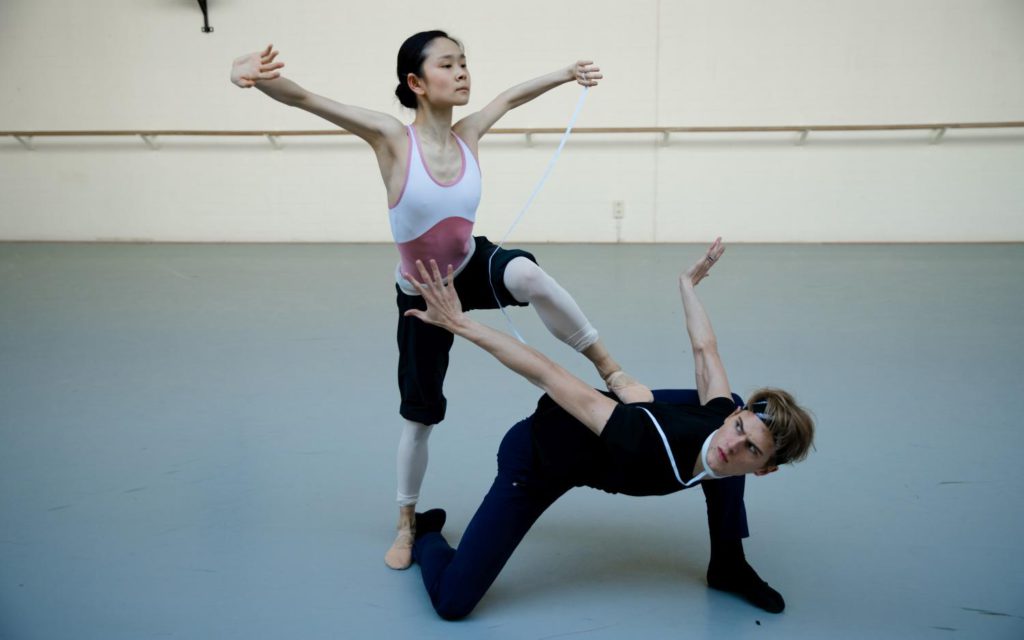 Situations that contain both multi-talented individuals and opportunities for unfolding these talents are quite rare. In your case, the two have combined well. How was that possible? What role has your family played in this process?
Situations that contain both multi-talented individuals and opportunities for unfolding these talents are quite rare. In your case, the two have combined well. How was that possible? What role has your family played in this process?
My mother was a painter and she was very musical. When I was a kid she was playing the piano and was singing Schubert lieder to herself. I heard her practicing right hand and left hand and together. At a very early age I got an understanding of how music is constructed. But 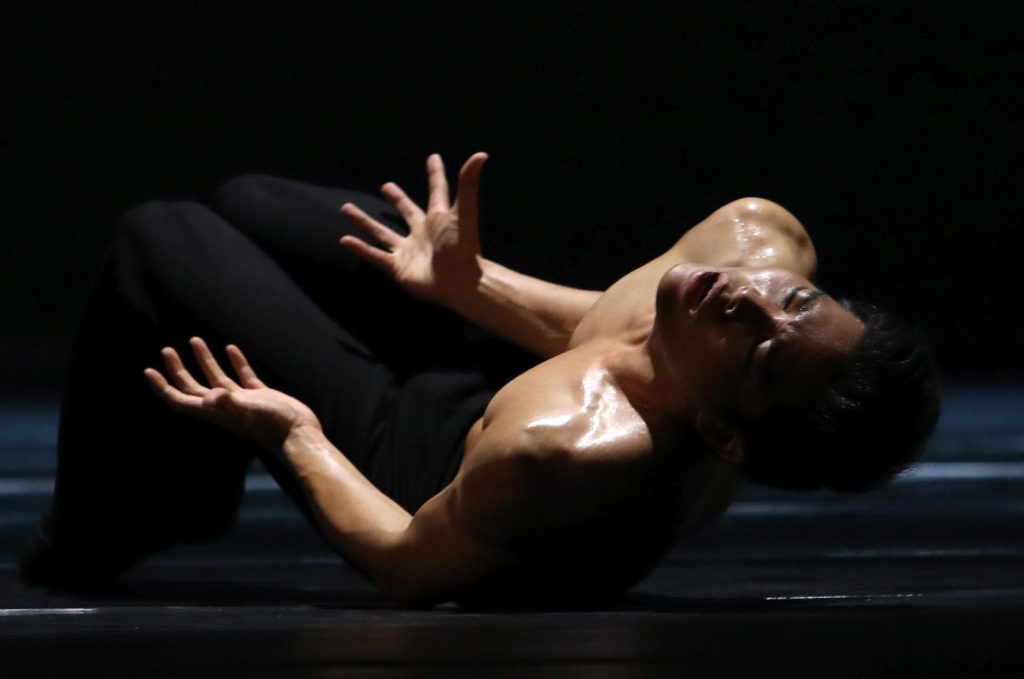 my family didn’t play a great role in my further development. My father wasn’t very happy with my choice of a dancing career. He wanted me to get an opinion of an authority if there was any possibility for me. So I went to Sonia Gaskell [a former dancer of the Ballets Russes who ran a ballet school in Amsterdam and directed the Nederlands Ballet]. She engaged me immediately. Then it was all right for my father. But I don’t think he ever came to see me dance. Strangely, it only recently occurred me. But once I began choreographing and building up a name for myself he finally became a little bit proud of me.
my family didn’t play a great role in my further development. My father wasn’t very happy with my choice of a dancing career. He wanted me to get an opinion of an authority if there was any possibility for me. So I went to Sonia Gaskell [a former dancer of the Ballets Russes who ran a ballet school in Amsterdam and directed the Nederlands Ballet]. She engaged me immediately. Then it was all right for my father. But I don’t think he ever came to see me dance. Strangely, it only recently occurred me. But once I began choreographing and building up a name for myself he finally became a little bit proud of me.
I have a younger half-sister and I had an older brother but neither was involved in the arts.
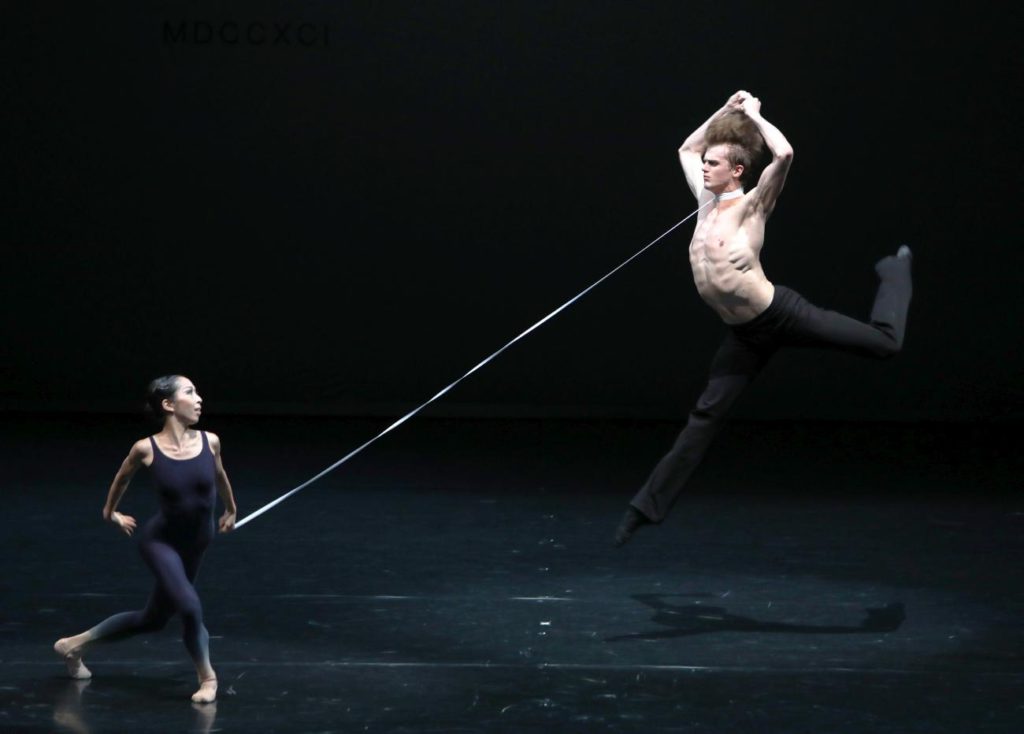 When did your other artistic talents become apparent?
When did your other artistic talents become apparent?
I started at an early age, around the age of five or six, making sculptures from clay and drawing pictures. I made it up to the forth class in gymnasium but when I got really interested in art and dance, normal school became a disaster. I didn’t do my work anymore. As a sort of interim solution, my father allowed me to go to art school studying sculpture instead. At the same time I began taking private dance classes.
It would appear that dancing and working within the visual arts developed in parallel back then. At times one took priority, then the other. You left the art school early; you joined Sonia Gaskell’s company, but only four years later, age 23, you quit dancing to study painting and sculpture at the 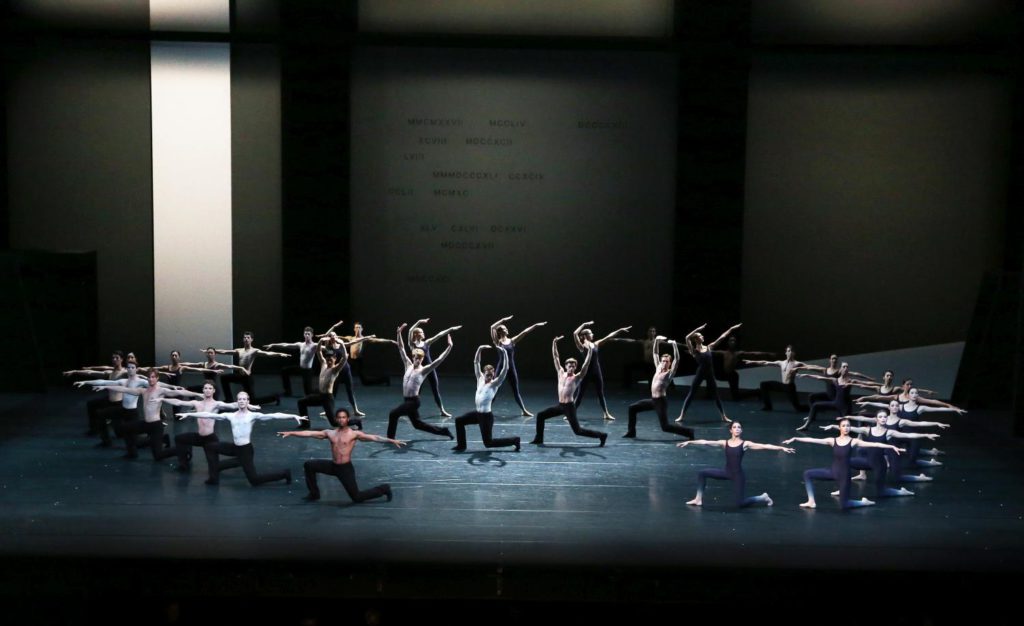 Royal Academy in Den Haag. Why?
Royal Academy in Den Haag. Why?
There were some difficulties in the company, a lot of strifes and arguments. So I thought I’d better leave and become a visual artist. Moreover I had already completed two years of art study. After I had finished the art school the Belgium government granted me a one-year scholarship to study at the Higher Institute of Fine Arts. I’ve been in Greece for one year, working on the island of Paros. There were all these pieces of marble laying around and I studied sculpting in marble. I had no idea that I would ever go back to dance.
Actually it happened just by accident. Rudi van Dantzig was making his famous piece, “Monument for a Dead Boy” [1965], 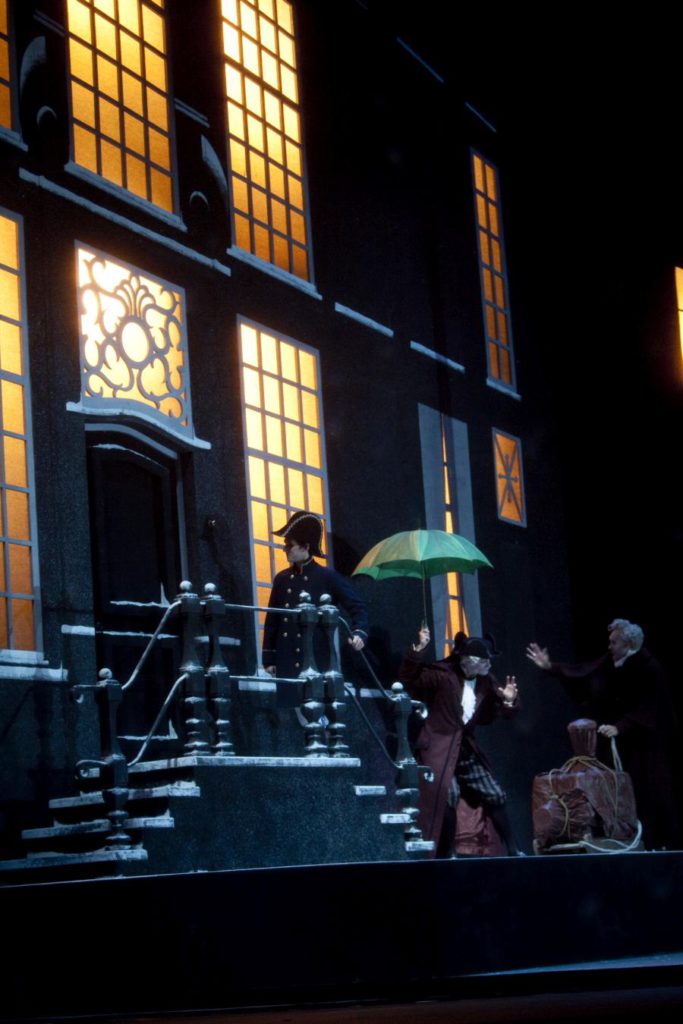
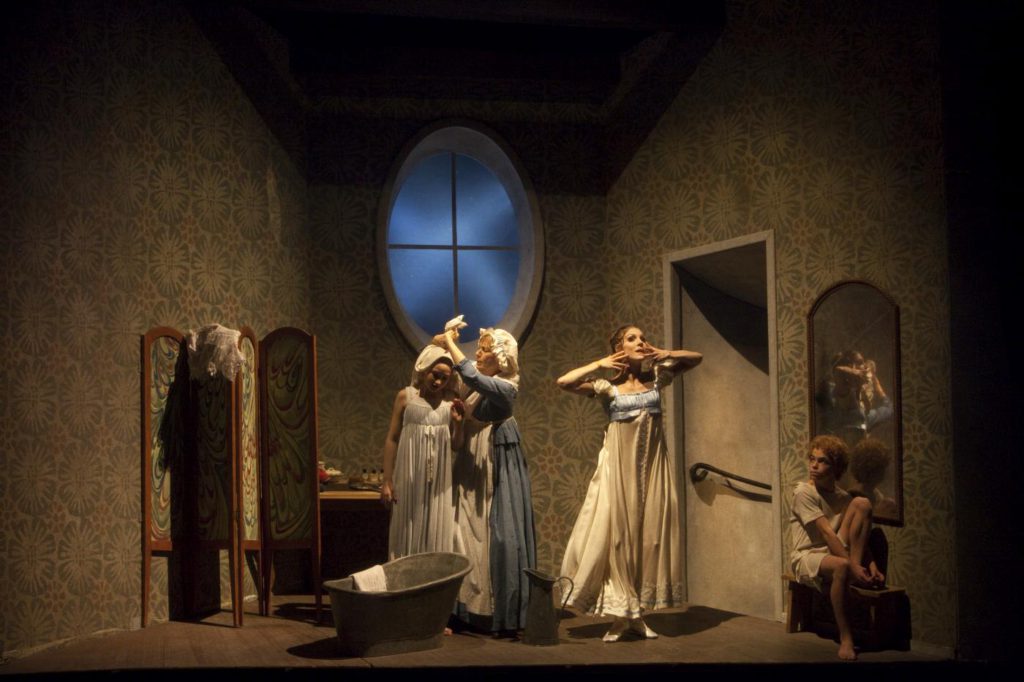 and, having just returned from Greece, I did the design. One day Rudi asked me: “Can you come to the studio on Sunday or in an evening to sort out some movements?” I had done this before, so I went. At that time I had stopped ballet, but was taking Graham classes. Then it turned out that one boy couldn’t cope with his part mentally, the second cast got injured shortly before the premier. And Rudi said: “You know almost all of the choreography. Why don’t you dance it?” I did! [he laughs] I guested in this role for one year and then I realized that I wanted to return to the company.
and, having just returned from Greece, I did the design. One day Rudi asked me: “Can you come to the studio on Sunday or in an evening to sort out some movements?” I had done this before, so I went. At that time I had stopped ballet, but was taking Graham classes. Then it turned out that one boy couldn’t cope with his part mentally, the second cast got injured shortly before the premier. And Rudi said: “You know almost all of the choreography. Why don’t you dance it?” I did! [he laughs] I guested in this role for one year and then I realized that I wanted to return to the company.
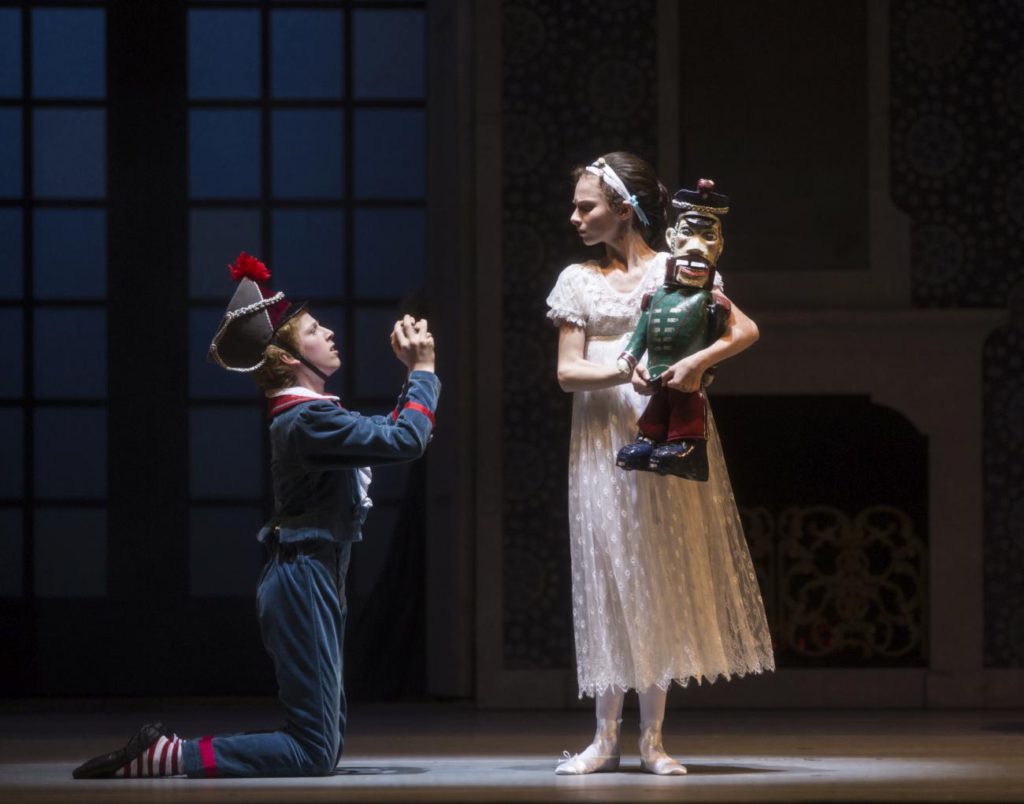
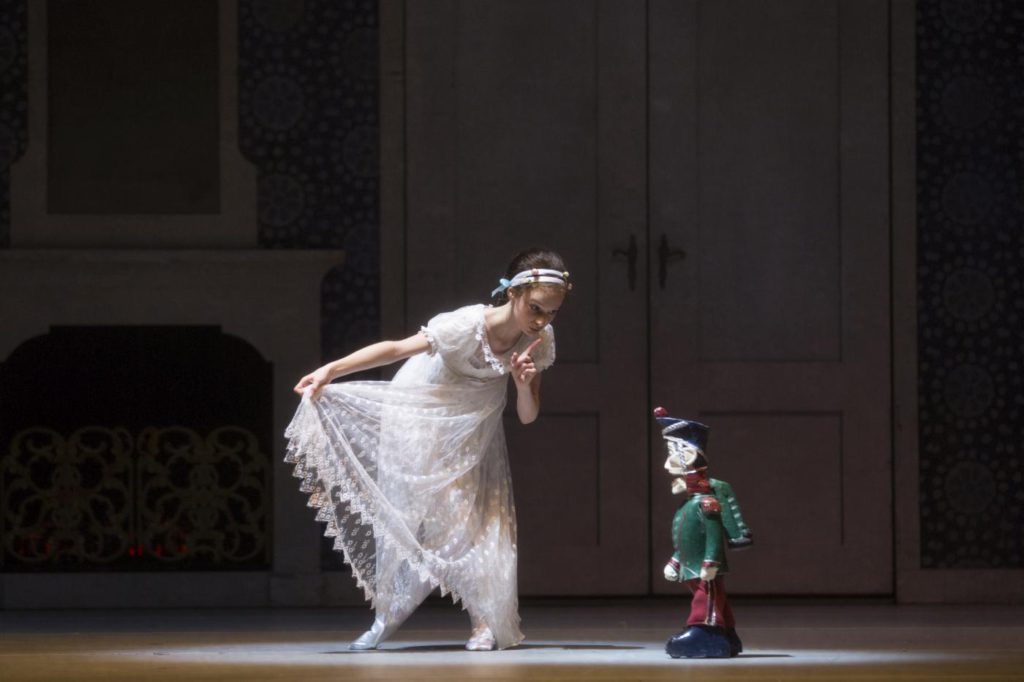 This part, the Young Boy in “Monument for a Dead Boy”, became a signature role for you. The piece deals with repressed homosexuality, which was a hot topic in 1965. How did your friends and your family react upon learning that you were cast as the main role? Do you think the ballet would still stir excitement today?
This part, the Young Boy in “Monument for a Dead Boy”, became a signature role for you. The piece deals with repressed homosexuality, which was a hot topic in 1965. How did your friends and your family react upon learning that you were cast as the main role? Do you think the ballet would still stir excitement today?
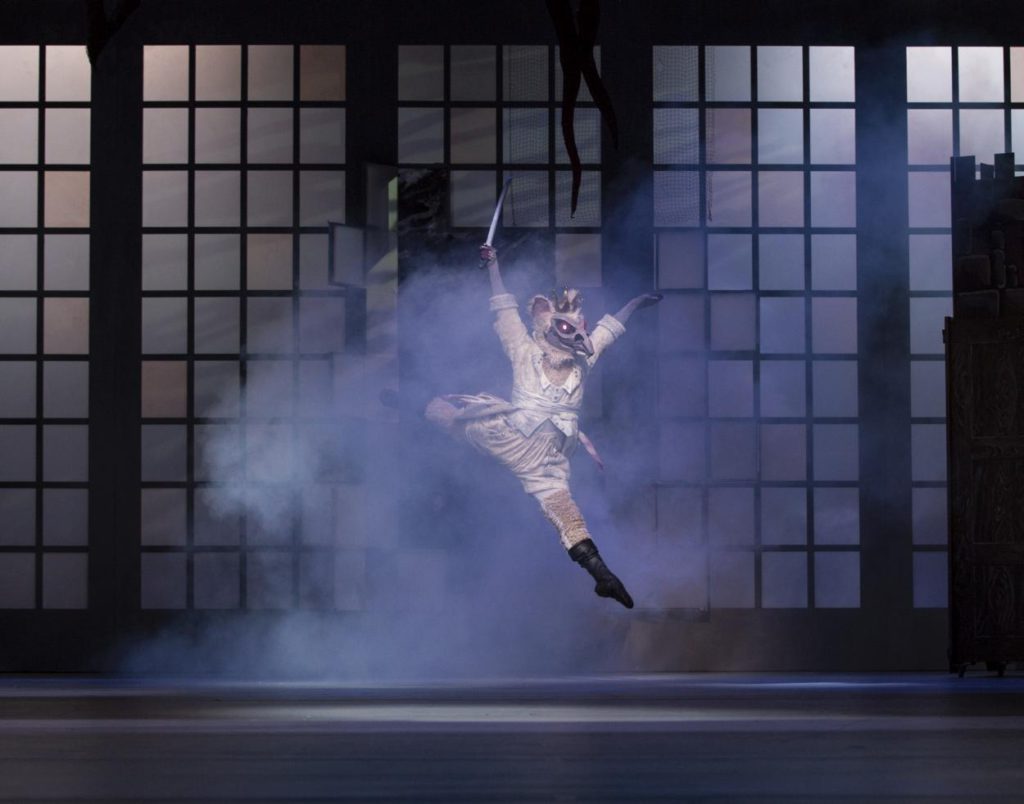
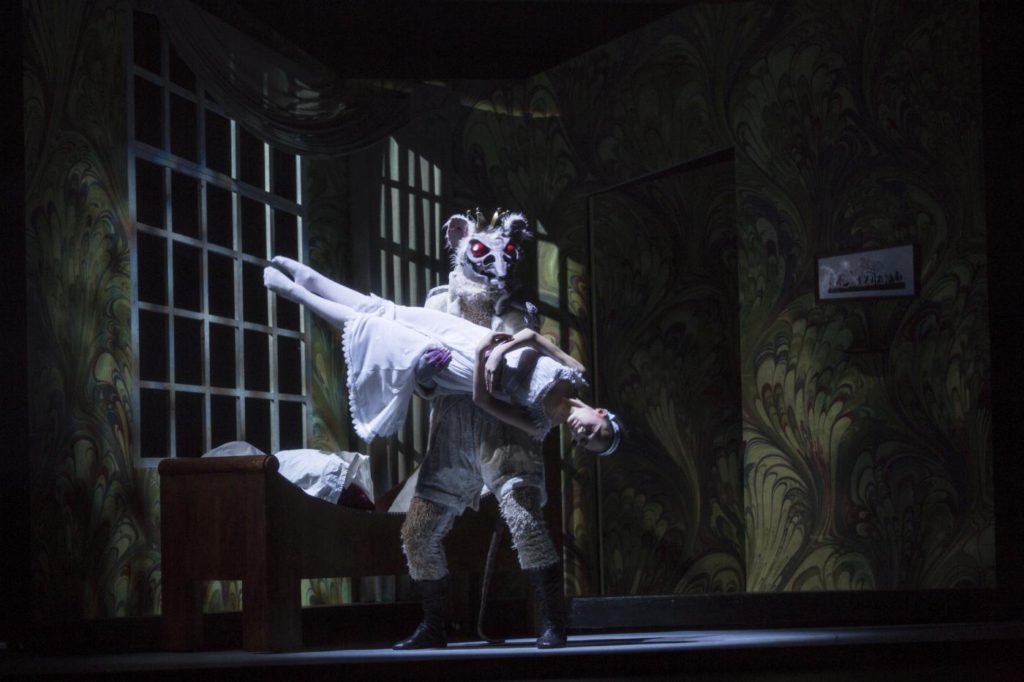 The only one of my family who went to see it was my mother. And she was always very much in favor of me dancing. She was very happy with the ballet and with my role in it. If the topic is relevant any more…? Not in the Netherlands. There must be places and countries where this would be difficult to accept for audiences, in Syria maybe. But we performed it in Brazil and a lot of places actually without any problems.
The only one of my family who went to see it was my mother. And she was always very much in favor of me dancing. She was very happy with the ballet and with my role in it. If the topic is relevant any more…? Not in the Netherlands. There must be places and countries where this would be difficult to accept for audiences, in Syria maybe. But we performed it in Brazil and a lot of places actually without any problems.
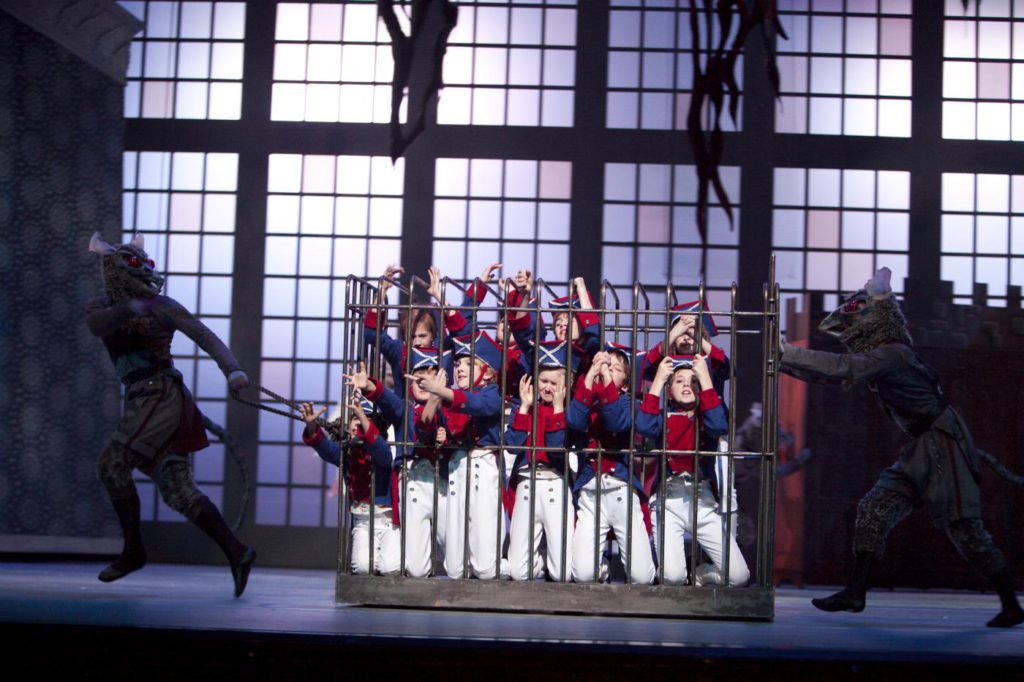 You created your first piece, “Imperfect Past Tense”, in 1971 when Rudi van Dantzig became artistic director. What prompted you to try your hand at choreography?
You created your first piece, “Imperfect Past Tense”, in 1971 when Rudi van Dantzig became artistic director. What prompted you to try your hand at choreography?
I had been assisting Rudi a lot when was choreographing and I got the feeling that maybe I could do it myself. But actually, Rudi said at one point: “Now you have to make a ballet! Next year!” Maybe he saw my potential.
I had been designing for him for years already and I was also dancing. It was a huge amount of work. Sometimes I had the feeling when other dancers went home to rest, then I started working at home. But I never felt exhausted, rather enriched.
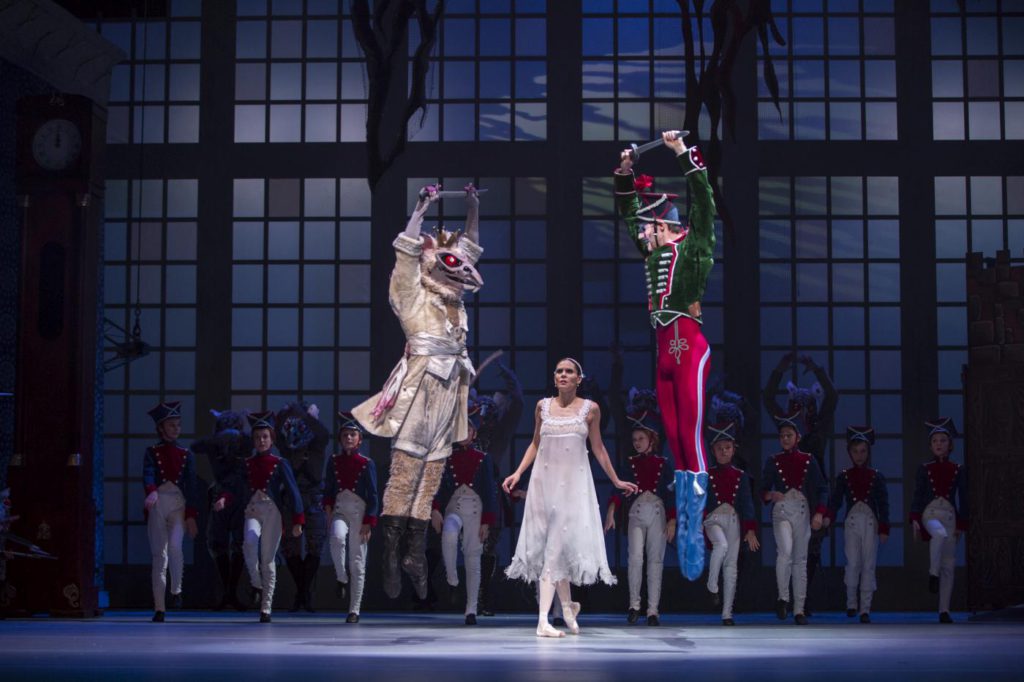 Today at the conference, talk was also centered on the younger generation of dancers. Concerns were expressed that some of them don’t seem interested in culture. What do you think is the reason for this indifference?
Today at the conference, talk was also centered on the younger generation of dancers. Concerns were expressed that some of them don’t seem interested in culture. What do you think is the reason for this indifference?
It’s sometimes difficult to get into their minds. Rudi was like me. When we were young, seventeen or eighteen years old, we were totally absorbed by dance. I read every book about Diaghilev and the whole period. I knew everything. In our days, I’ve the feeling, when I say “Nijinsky”, I’m asked: “Who?” That disturbs me very much. That they have no interest in the history. Not all of them. But there are a lot who don’t care who came before them.
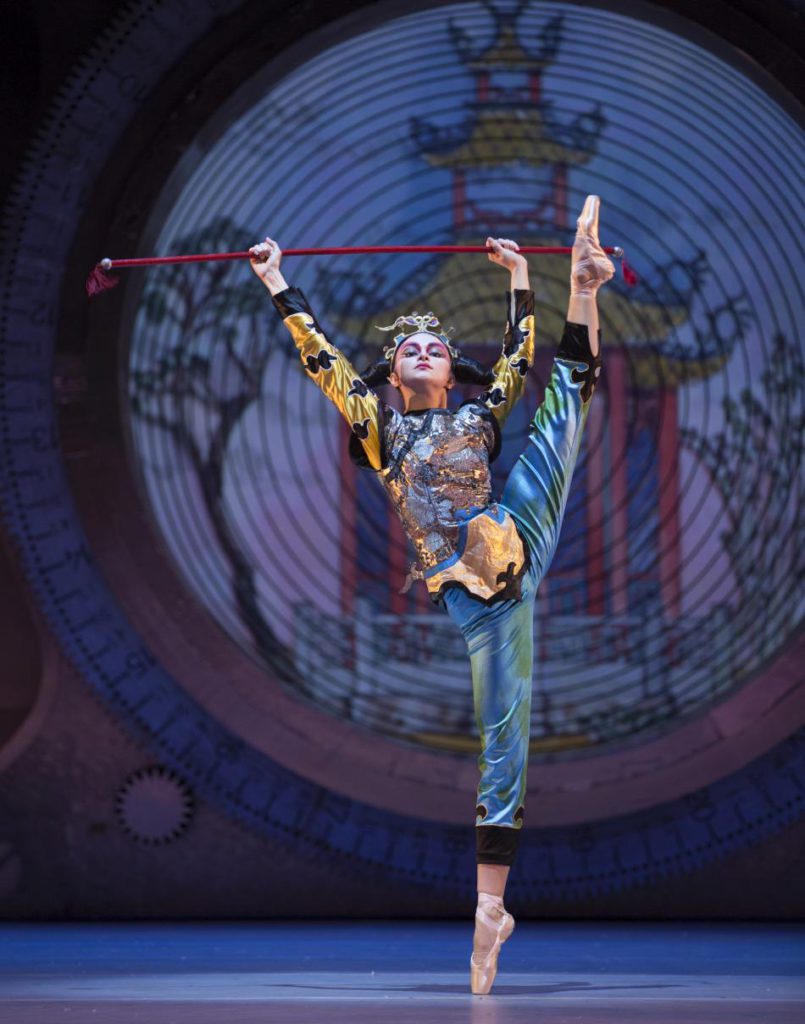
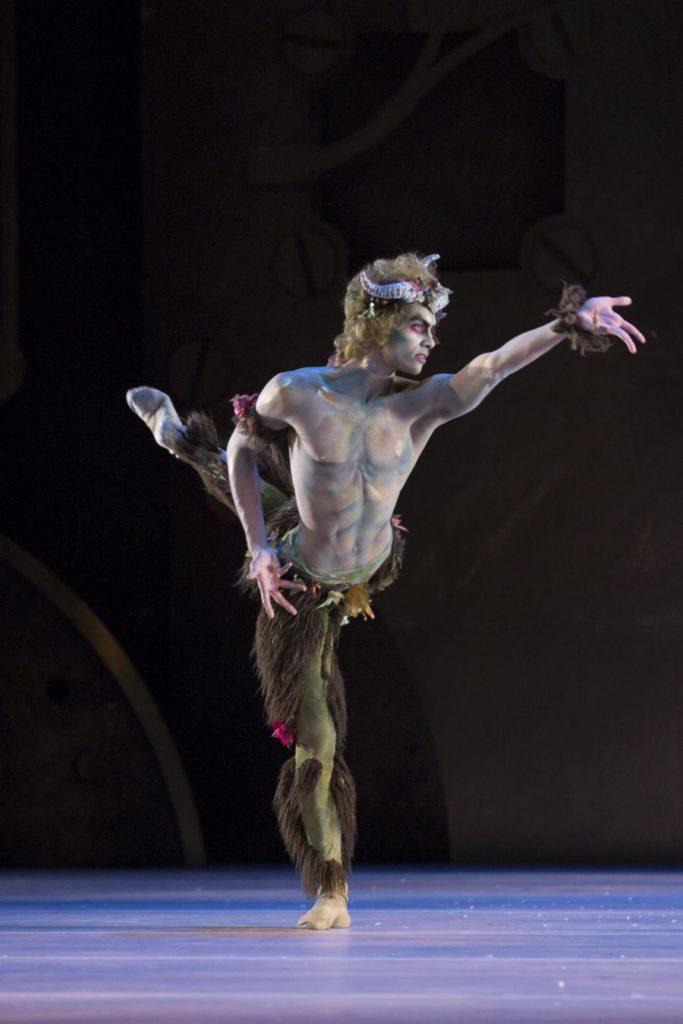 Might that affect the richness of their personalities?
Might that affect the richness of their personalities?
It depends. There are a lot of artists who have a good intuition even if they don’t know about the tradition. But certainly there are some who are less interesting as artists.
Clint Farha, for example, who has been a star dancer here and my muse for all this time, professes to have no interest in art. Actually he is more knowledgeable than he wants one to suspect. [he laughs]
Your choreographic style is described as very plastic, using the dancers as moving sculptures. When watching “Episodes 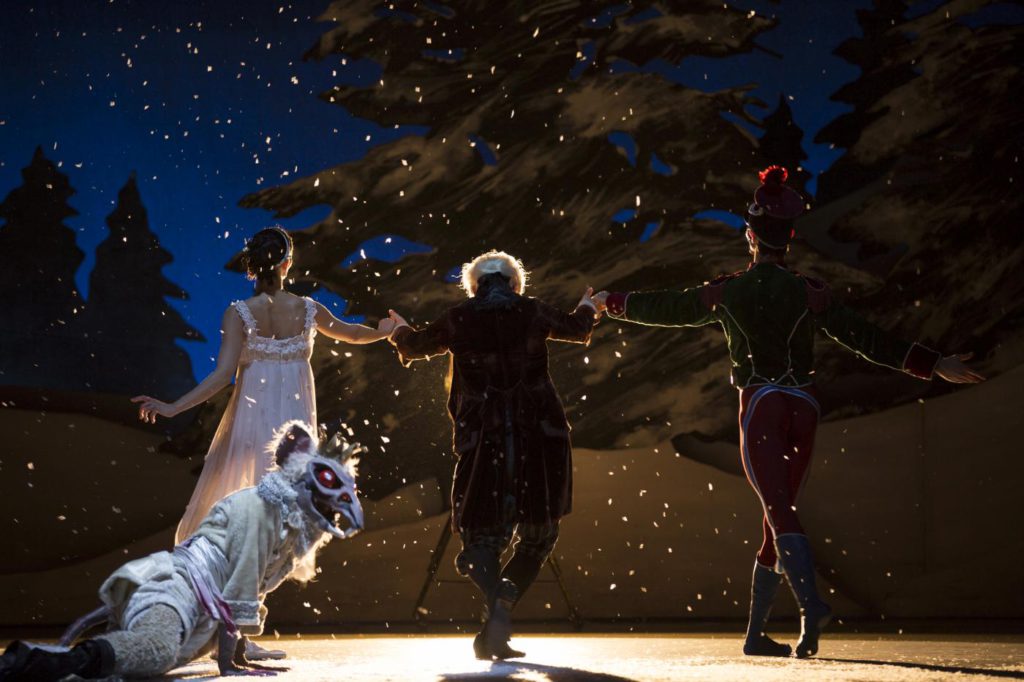 van Fragmenten”, for example, I thought of Rodin sculptures coming alive. How would you characterize your style? To what extent does being a sculptor influence your choreography?
van Fragmenten”, for example, I thought of Rodin sculptures coming alive. How would you characterize your style? To what extent does being a sculptor influence your choreography?
I know that has been written a lot but I don’t really agree with that. I see the dancers as living organisms, not as sculptures. Even in the most abstract things I did, I have been interested in their personalities and less in their plastic movements. Those are part of it, part of the dancers’ psychology.
When I’m choreographing I don’t think at all about sculpting. I only think of movement. To me it comes totally natural to make them move the way they do.
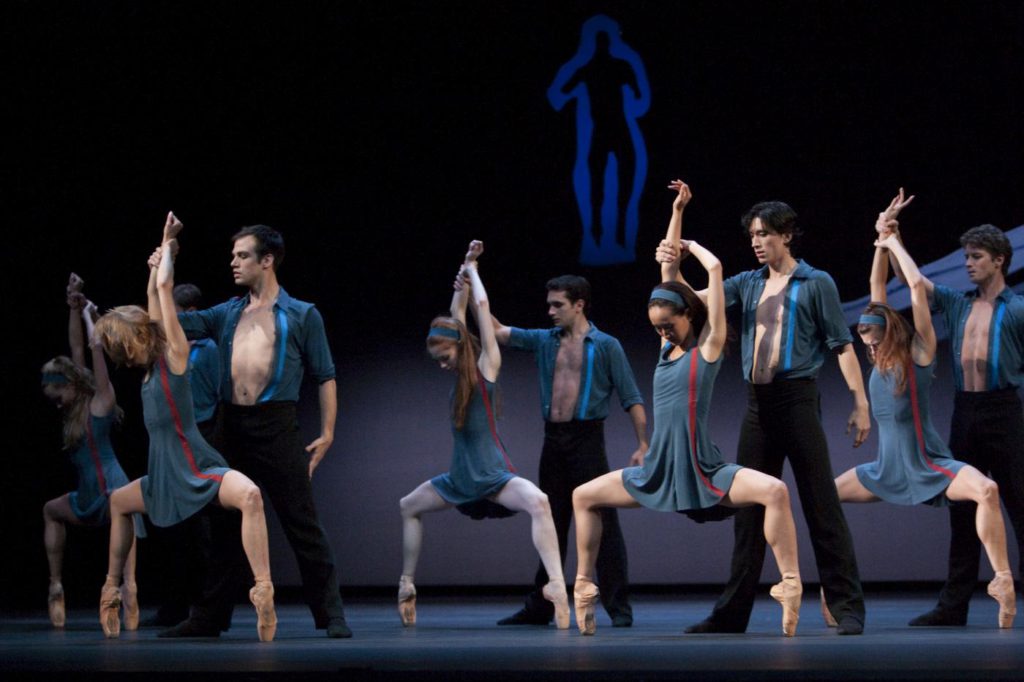 Do you have an eye on your colleagues’ new choreography?
Do you have an eye on your colleagues’ new choreography?
Not so much anymore, I’m afraid. I’m painting and sculpting and sometimes, when I have the choice between working at home or going to see a performance, I prefer working at home. There isn’t much going on in dance that really interests me anymore. For a long time I thought when seeing a performance of a modern choreographer: Imagine if I had to write something about it I would not know where to start. [he laughs]
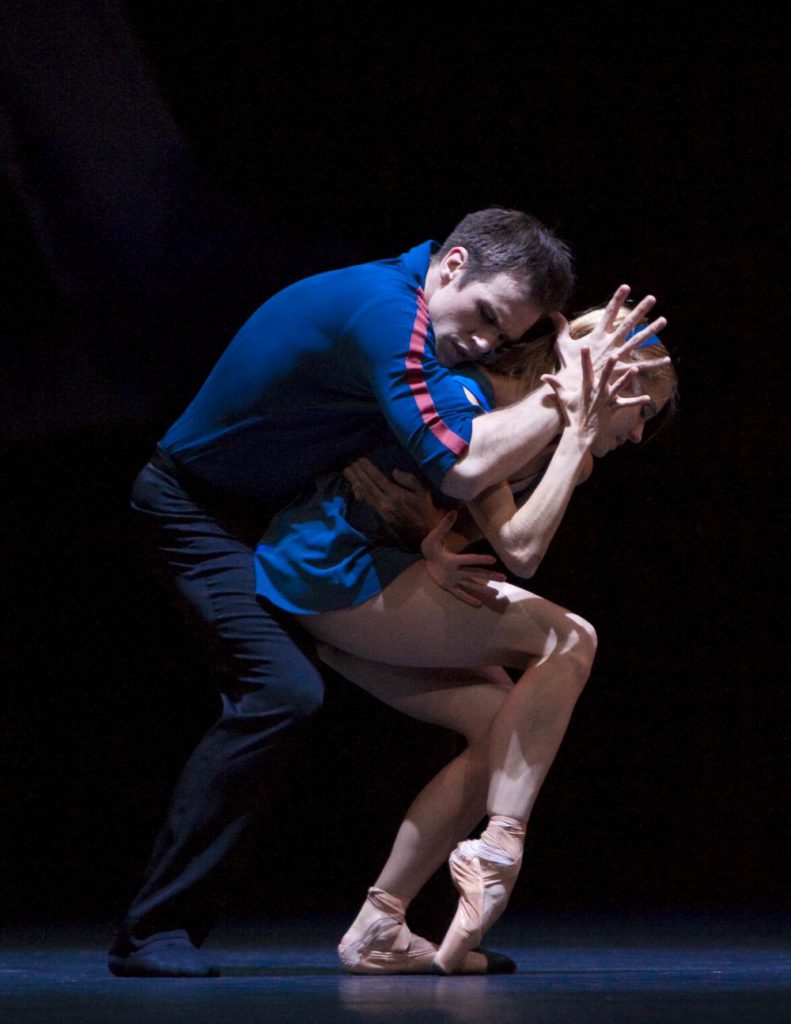
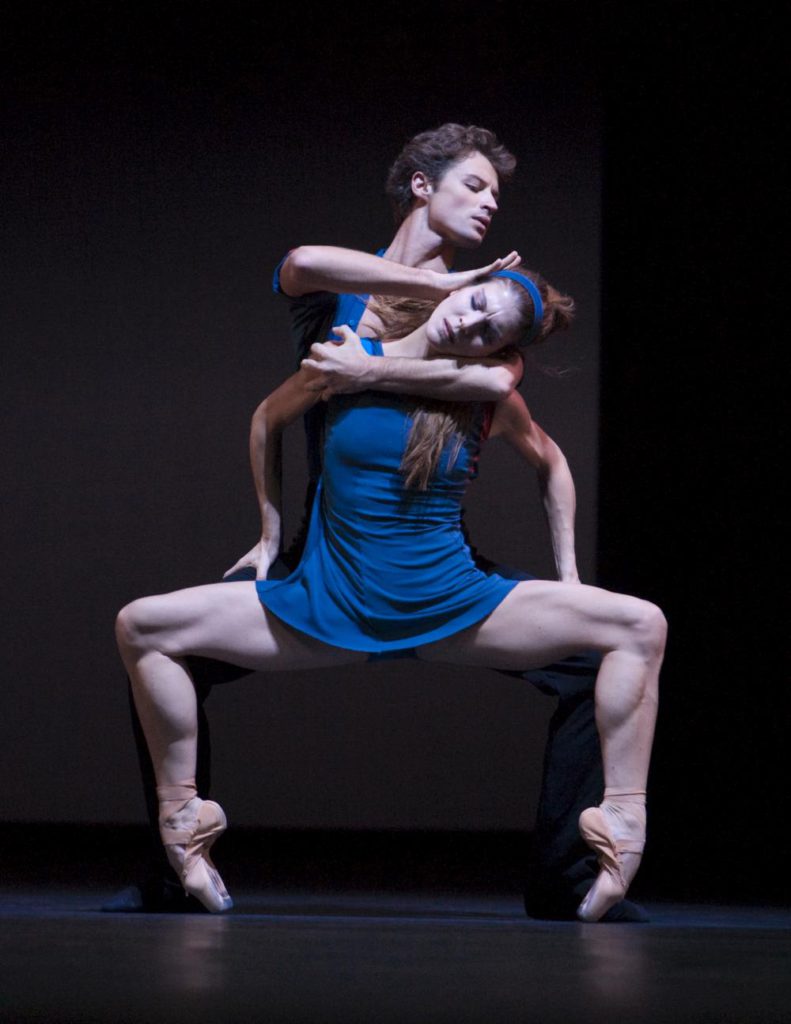 But the good thing is, if there is something that really touches you then you’re much more related than when you think everything is fascinating. Every now and then there is a serendipity: “Ah, now this really means something to me!” And then I’m happy about that. When I was seventeen or nineteen, whatever pas de deux was with a flip or a flap I though: “Oh fantastic!”
But the good thing is, if there is something that really touches you then you’re much more related than when you think everything is fascinating. Every now and then there is a serendipity: “Ah, now this really means something to me!” And then I’m happy about that. When I was seventeen or nineteen, whatever pas de deux was with a flip or a flap I though: “Oh fantastic!”
Have you ever felt pressure to produce something? Would a certain amount of pressure help or mar your creativity?
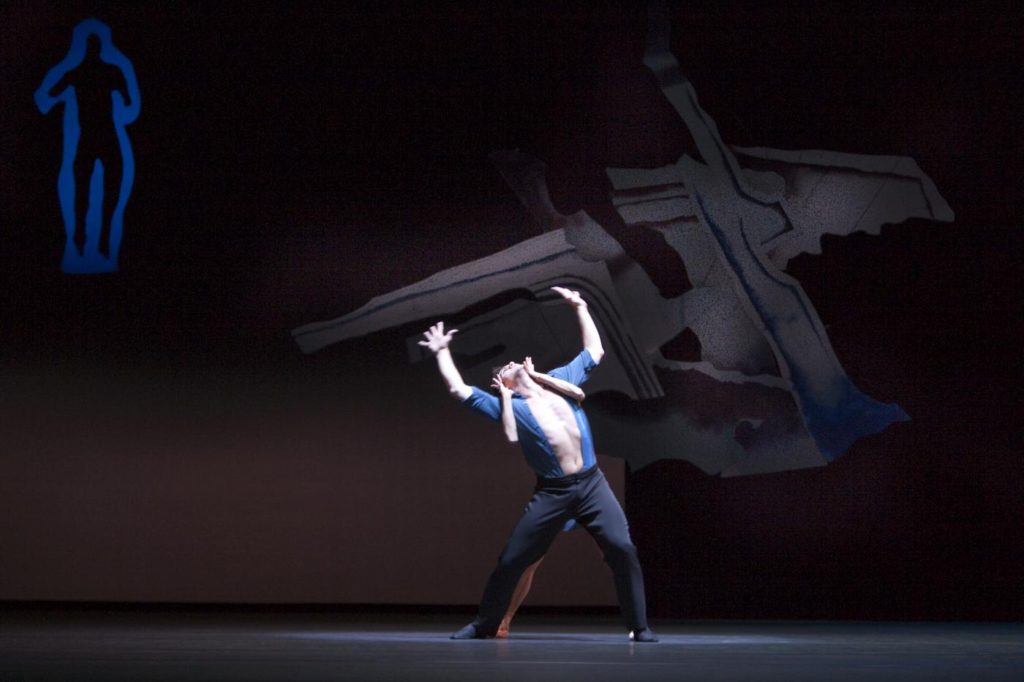 Sometimes it’s helpful to have a deadline. But I was in the lucky position that Rudi was my director for a long, long time. And he used to say: “You just do what you think you have to. It doesn’t matter if it’s successful or not.” I didn’t have to worry about that. But he worked the same way. It was an easier time, economically easier. Subsidy was more lavish and unquestioning; nowadays the government is much more insisting on large visitor numbers.
Sometimes it’s helpful to have a deadline. But I was in the lucky position that Rudi was my director for a long, long time. And he used to say: “You just do what you think you have to. It doesn’t matter if it’s successful or not.” I didn’t have to worry about that. But he worked the same way. It was an easier time, economically easier. Subsidy was more lavish and unquestioning; nowadays the government is much more insisting on large visitor numbers.
But I’ve always been terribly nervous when making a choreography. In the beginning I thought, well that will probably fade as I move on but actually it hasn’t. I always have the feeling when entering the studio that the dancers are harshly criticizing what I’m doing. I do not worry about the audience, but about the dancers’ opinion.
Hardly ever.
What’s your source of inspiration?
Inspiration doesn’t come from somewhere. You create it yourself. It comes during working. If you start sitting at home and wait for inspiration, you can wait forever. When I was working on my first piece, “Imperfect Past Tense” [1971], for instance, I suddenly got an idea for another piece, which turned into my second ballet, “Before, During, and After the Party”[1972] . I had such a strong image of this new piece that I considered to switch, to 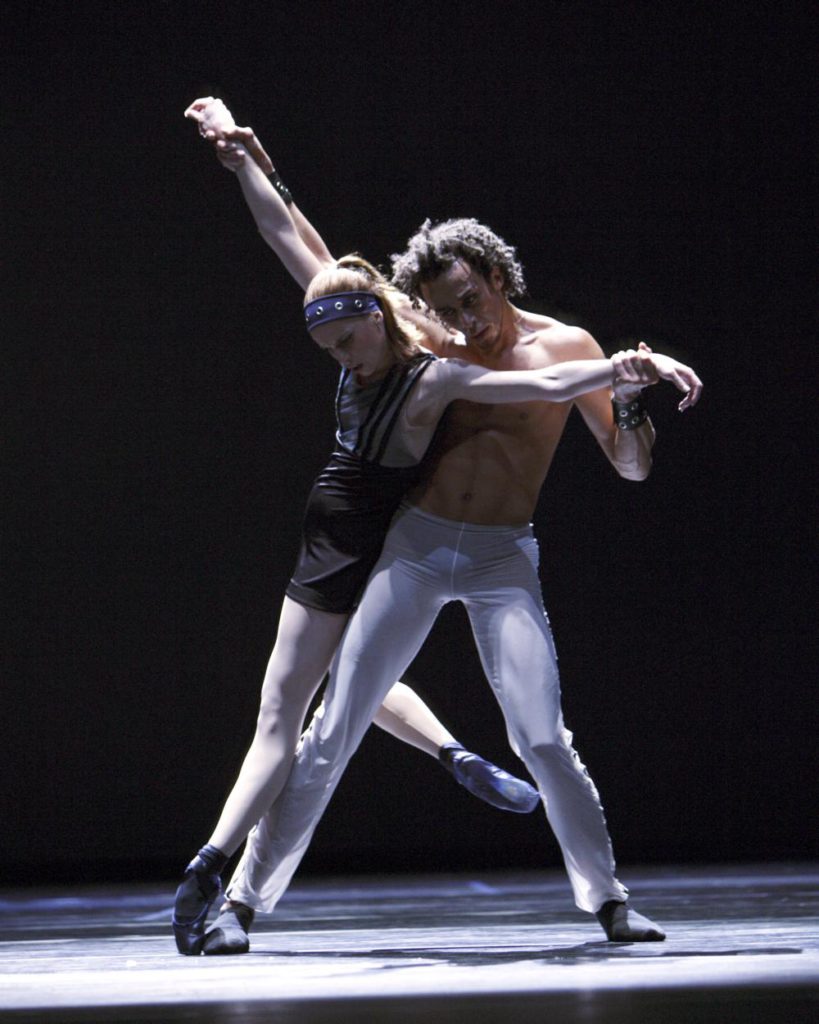
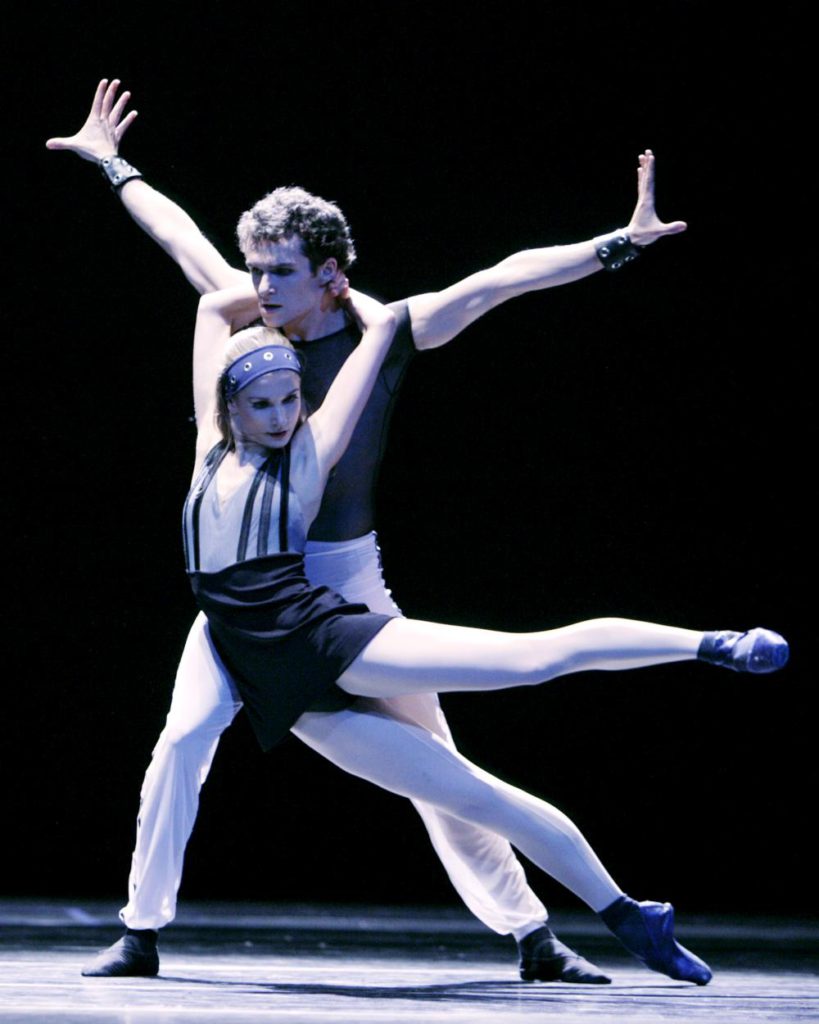 drop the first and continue with the new one. But I didn’t.
drop the first and continue with the new one. But I didn’t.
This weekend we are discussing the position of ballet in the cultural landscape. What direction do you hope the art form will take?
I don’t know if they already touched upon the topic in the conference, the role of the classics. Probably they say the classics should be adjusted so that they deal more with today’s society. I know some people who did that kind of adjustments. But to me that’s no development. The modern version rather stands next to 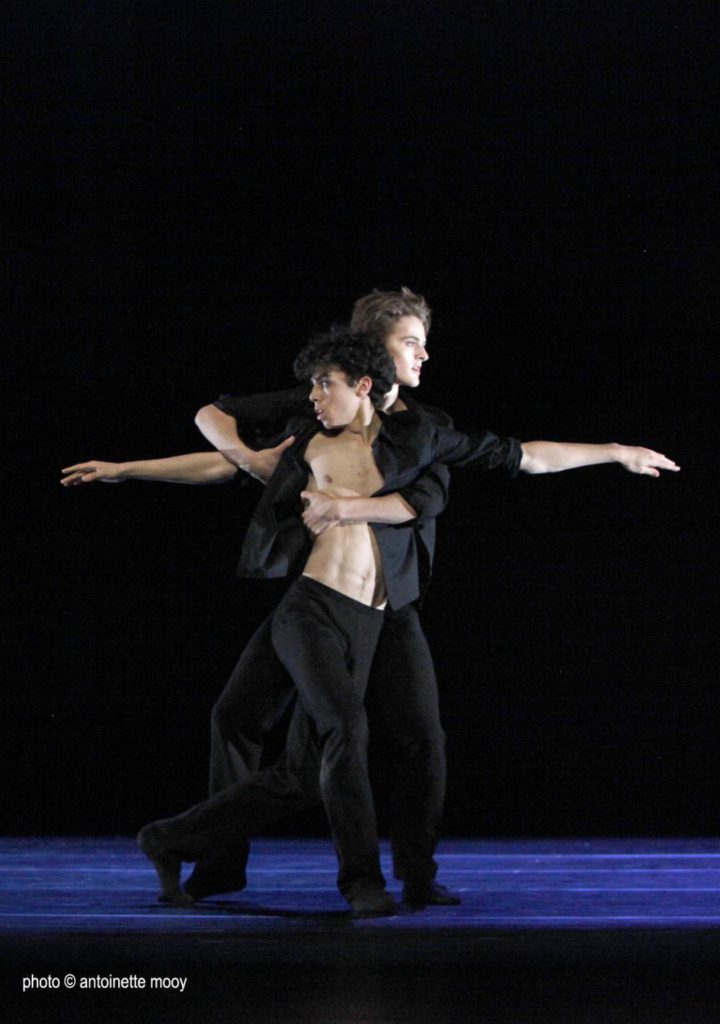 the classical one. It doesn’t influence it. Still the classics draw a lot of attention, they have their own life. Why should they be abolished? We don’t modernize Beethoven’s symphonies either, do we?
the classical one. It doesn’t influence it. Still the classics draw a lot of attention, they have their own life. Why should they be abolished? We don’t modernize Beethoven’s symphonies either, do we?
Generally, the audience seems more interested in evening-length works than in mixed bills. So I think we should create new narrative ballets with contemporary themes but so strong that they become classics of today. But I don’t think many young choreographers are interested in story ballets. Hardly anybody makes anything with a story, a theme, in our days. The influence of Billy Forsythe and his pieces seems to have been so enormous that all work more or less in that direction.
What projects are you working on at the moment?
Nothing.
That’s not true. You just finished a rehearsal with the Junior Company downstairs.
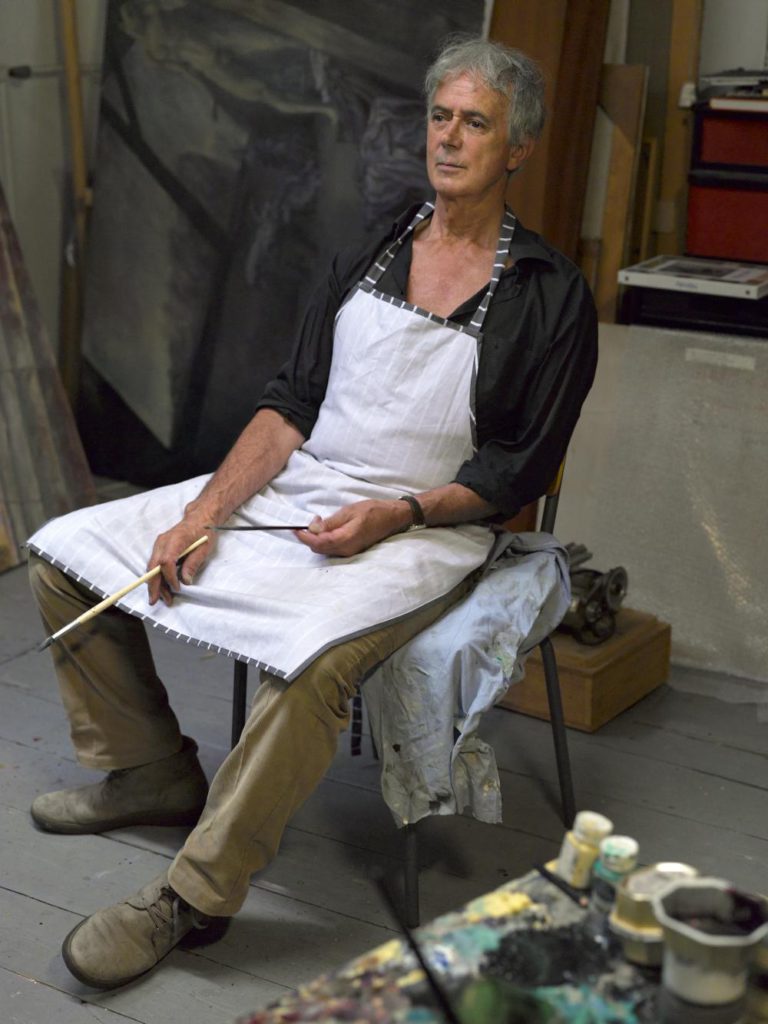
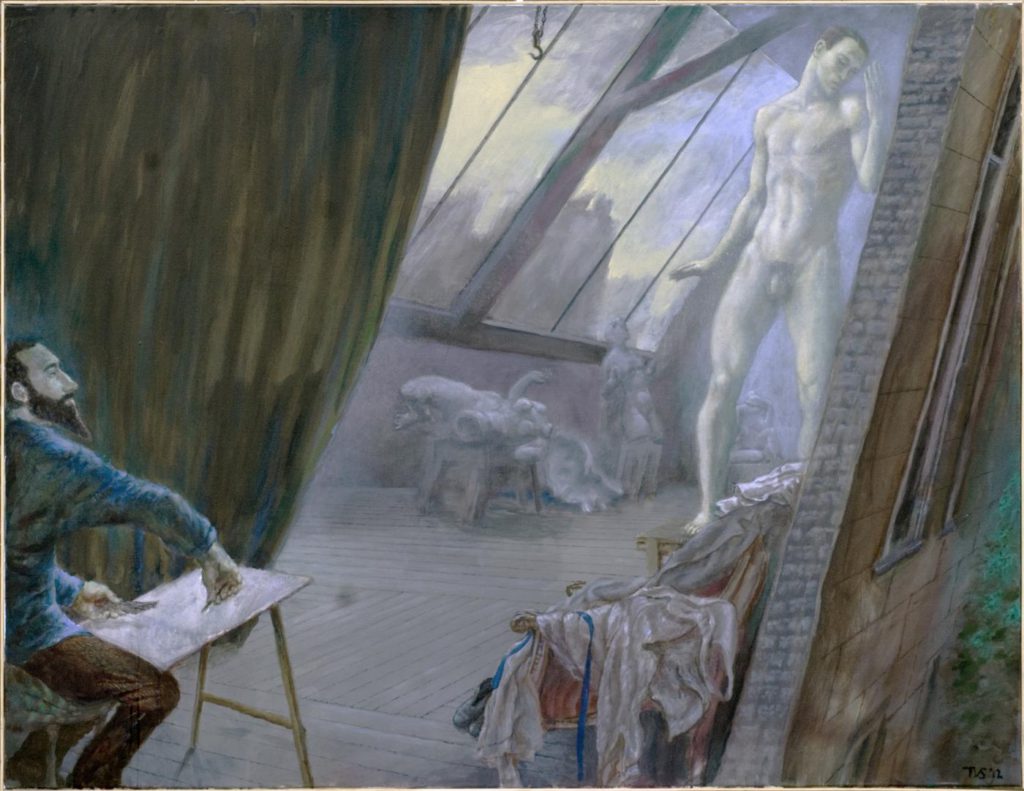 Well, I made “Ephebe” in 2002 for five boys, who where in their final year at the National Ballet School. They had an end of the year program and there wasn’t much for boys, so they asked me to do a piece for them. Its theme is that those five have been grown up from being together at school for ten years. Suddenly one goes here, the other there, their circle is broken. I staged it a couple of years later in Toronto, also for five boys who were leaving the school. This is the first time that’s it’s danced by boys who will stay together in the company.
Well, I made “Ephebe” in 2002 for five boys, who where in their final year at the National Ballet School. They had an end of the year program and there wasn’t much for boys, so they asked me to do a piece for them. Its theme is that those five have been grown up from being together at school for ten years. Suddenly one goes here, the other there, their circle is broken. I staged it a couple of years later in Toronto, also for five boys who were leaving the school. This is the first time that’s it’s danced by boys who will stay together in the company.
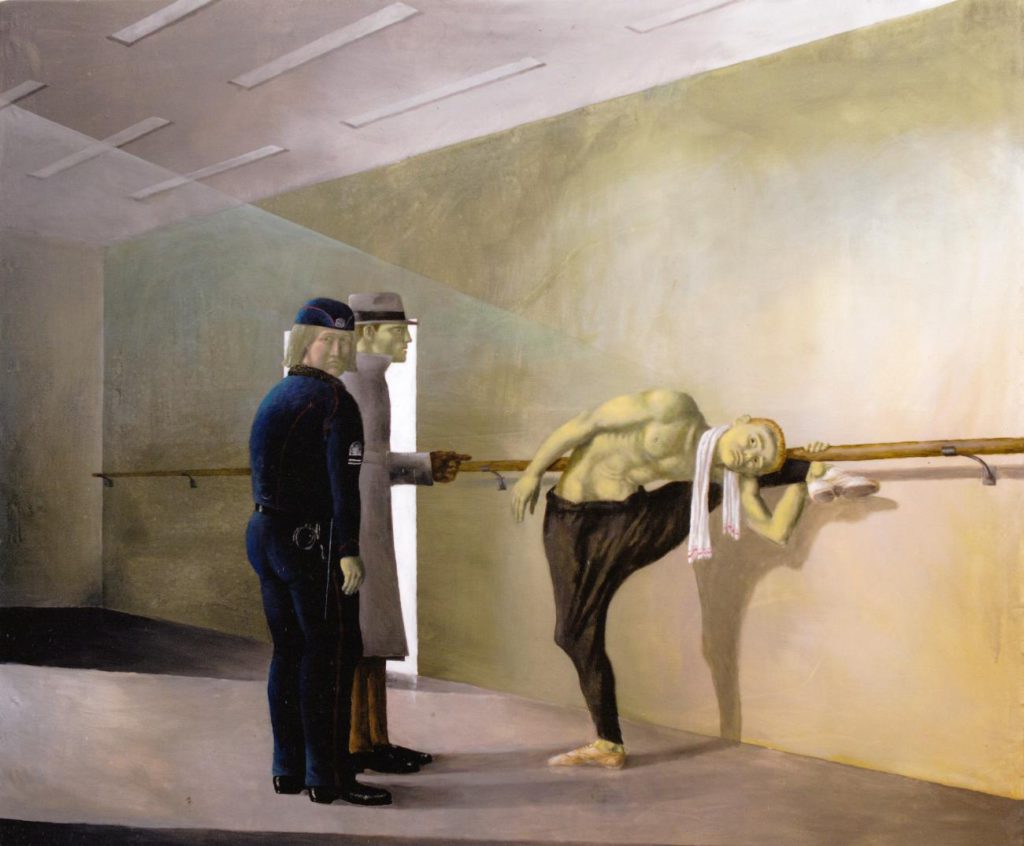 Do you want to stop choreographing?
Do you want to stop choreographing?
Not really. But someone should ask me to do it.
In art, maybe one has to follow one line like Hans [van Manen] did, and not deviate from it. You can recognize Hans’s choreographies. His handwriting is unique. People say, they can recognize my work also immediately. But my approach was broad. I’ve been painting and sculpting as well, and sometimes I did “Nutcracker”. Hans would never consider a “Nutcracker”.
It’s similar to what Lucio Fontana [Italio-Argentine painter, 1899 – 1968] started in the 1930s. He painted a canvas in one color and made cuts in it, two or three sharp cuts. He kept doing this and for ten years people thought: “This guy is crazy.” And then they started 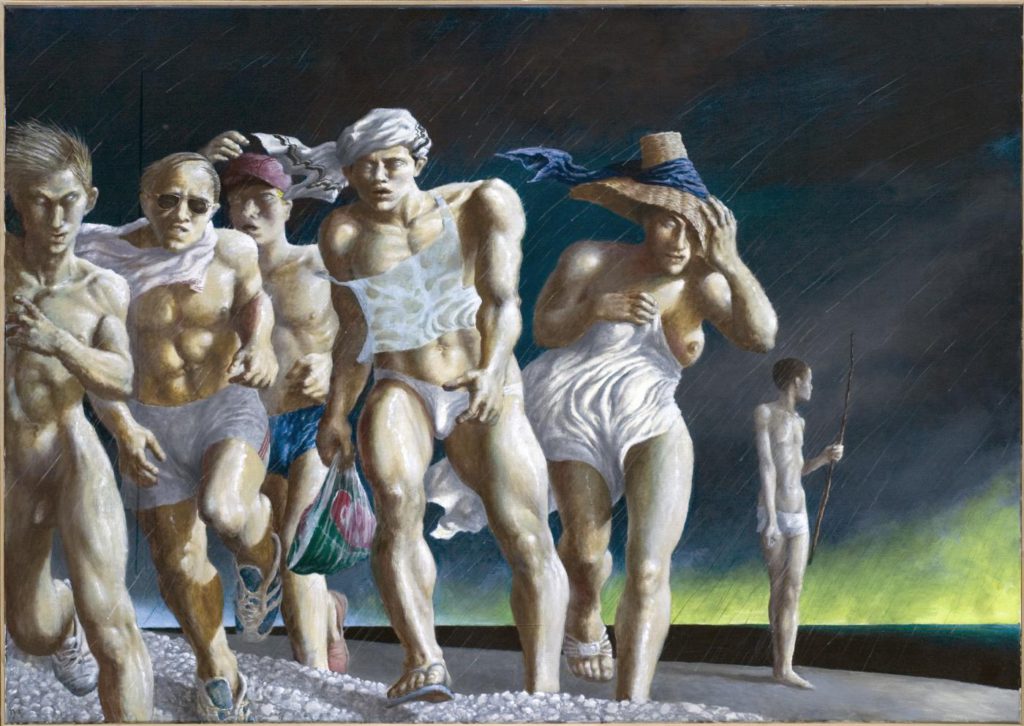 saying: “There must be something behind it.” You can’t pay his painting any more in our days! That’s what I mean, you have to follow one line, stubbornly. Whereas I’ve been doing this, that and the other. It’s what makes people think less seriously about you. But I don’t regret at all, not even having stopped dancing. I had a very talented body and if I hadn’t stopped performing for seven years but instead had studied hard with teachers in Paris or New York I probably could have become a world famous dancer. [he laughs]
saying: “There must be something behind it.” You can’t pay his painting any more in our days! That’s what I mean, you have to follow one line, stubbornly. Whereas I’ve been doing this, that and the other. It’s what makes people think less seriously about you. But I don’t regret at all, not even having stopped dancing. I had a very talented body and if I hadn’t stopped performing for seven years but instead had studied hard with teachers in Paris or New York I probably could have become a world famous dancer. [he laughs]
I wouldn’t have changed anything. No world fame, so what?
But, and it’s not the first time I’m saying this, I still have the feeling that I never did anything in my life. That I still have to start.
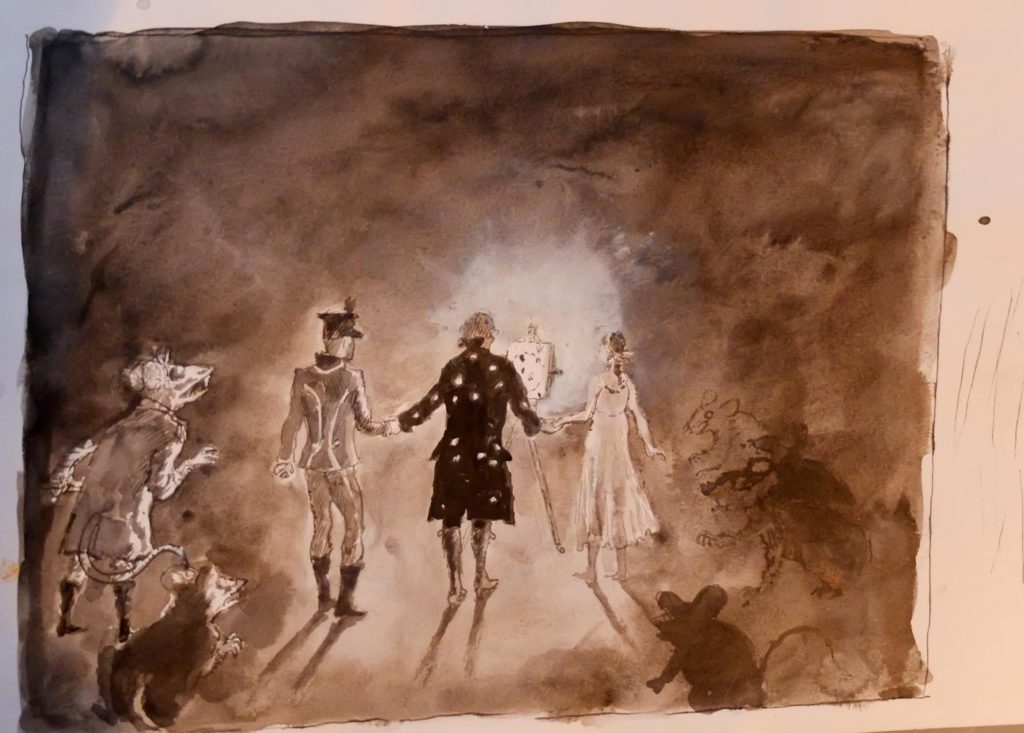
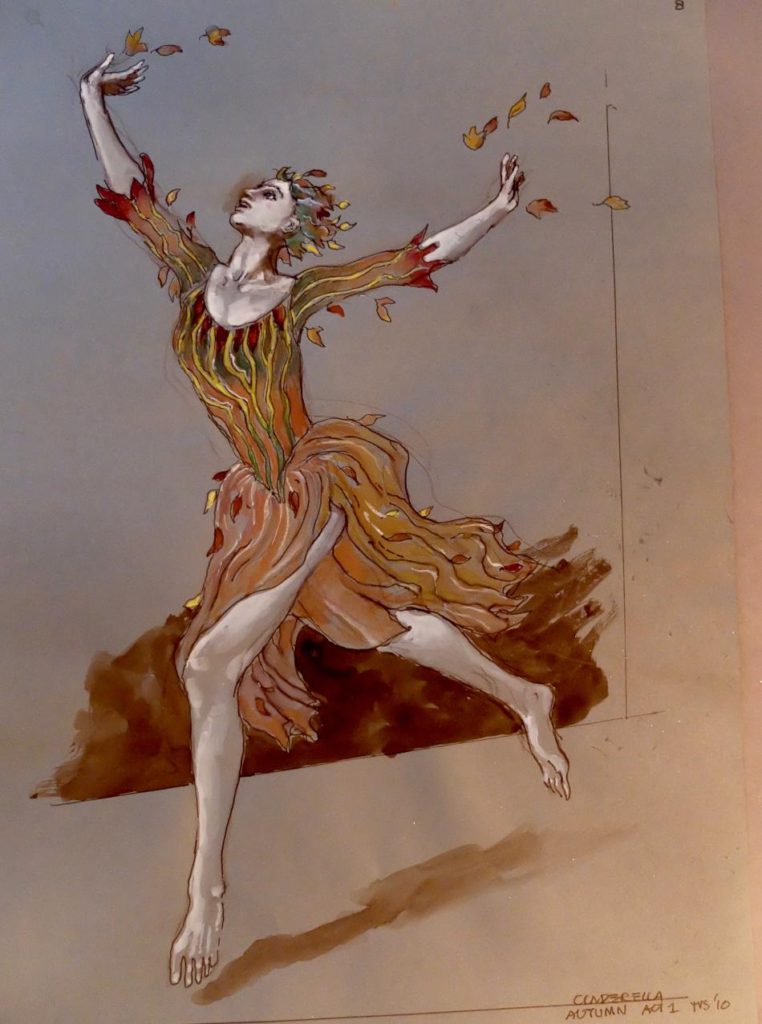 What would you like to start with?
What would you like to start with?
Great sculptures, great paintings… I’m working on a series of paintings on Nijinsky. Already my mother was crazy about Nijinsky. She had books about him. I had seen this books and knew about him even before I got interested in dance. I’ve read everything you could read about him. Somehow he is the hero of my life. He is such a fascinating person and character! And what is also interesting is that no two persons say the 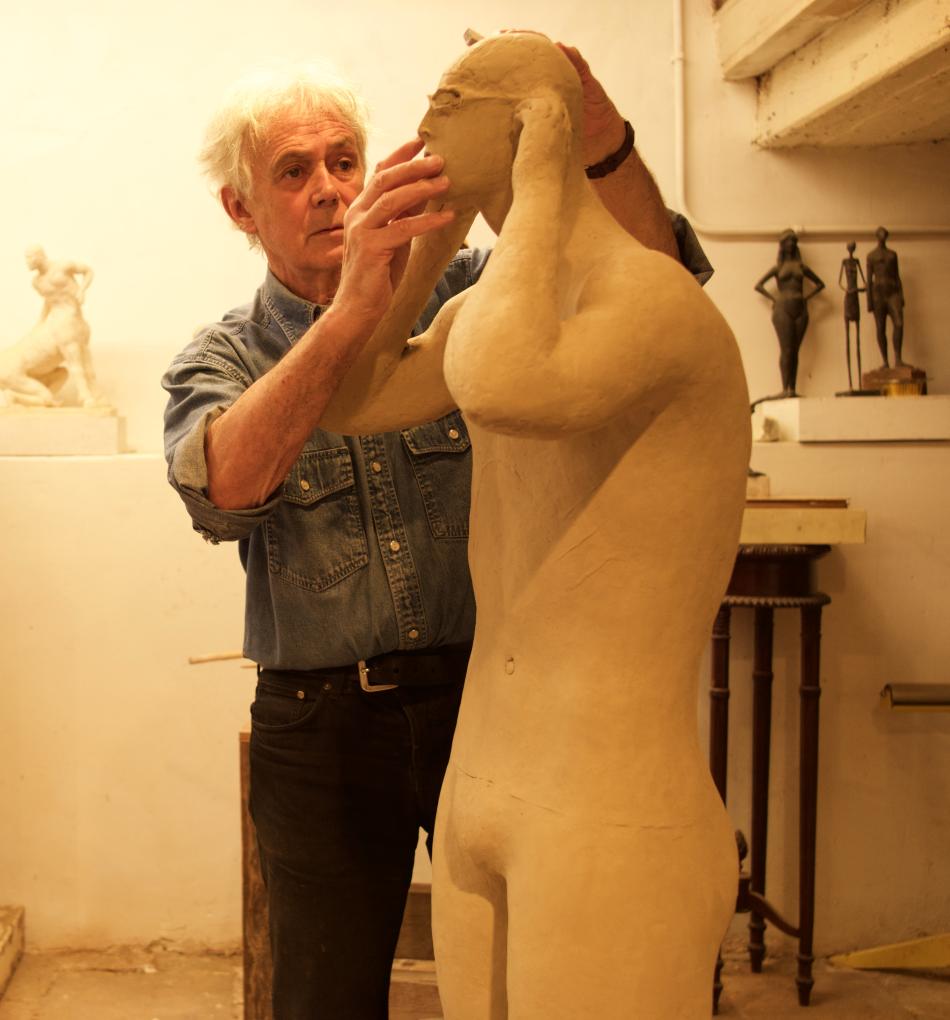
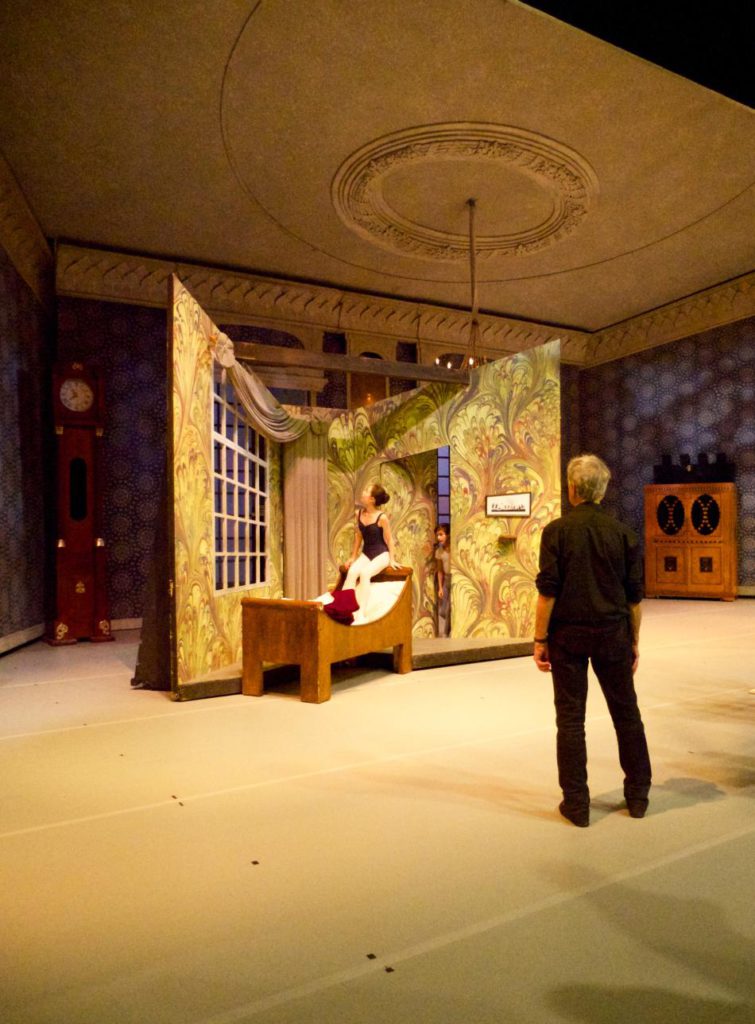 same things about him. Some people describe him as a silly person who sat there, never saying a word. Others had long conversations, long discussions about art, with him. Nijinsky remains an enigma.
same things about him. Some people describe him as a silly person who sat there, never saying a word. Others had long conversations, long discussions about art, with him. Nijinsky remains an enigma.
My paintings show episodes of his life. Some of them happened, others are my imagination. One of the things that really happened is that after the first season in Paris he suffered from typhoid fever and lay in bed in a rented room. Diaghilev was so afraid of contagion that he never came round before Nijinsky was better. Then he proposed to him that they should live together. But I’ve the feeling Nijinsky consented almost against his will. He wasn’t interested in living with Diaghilev. Maybe 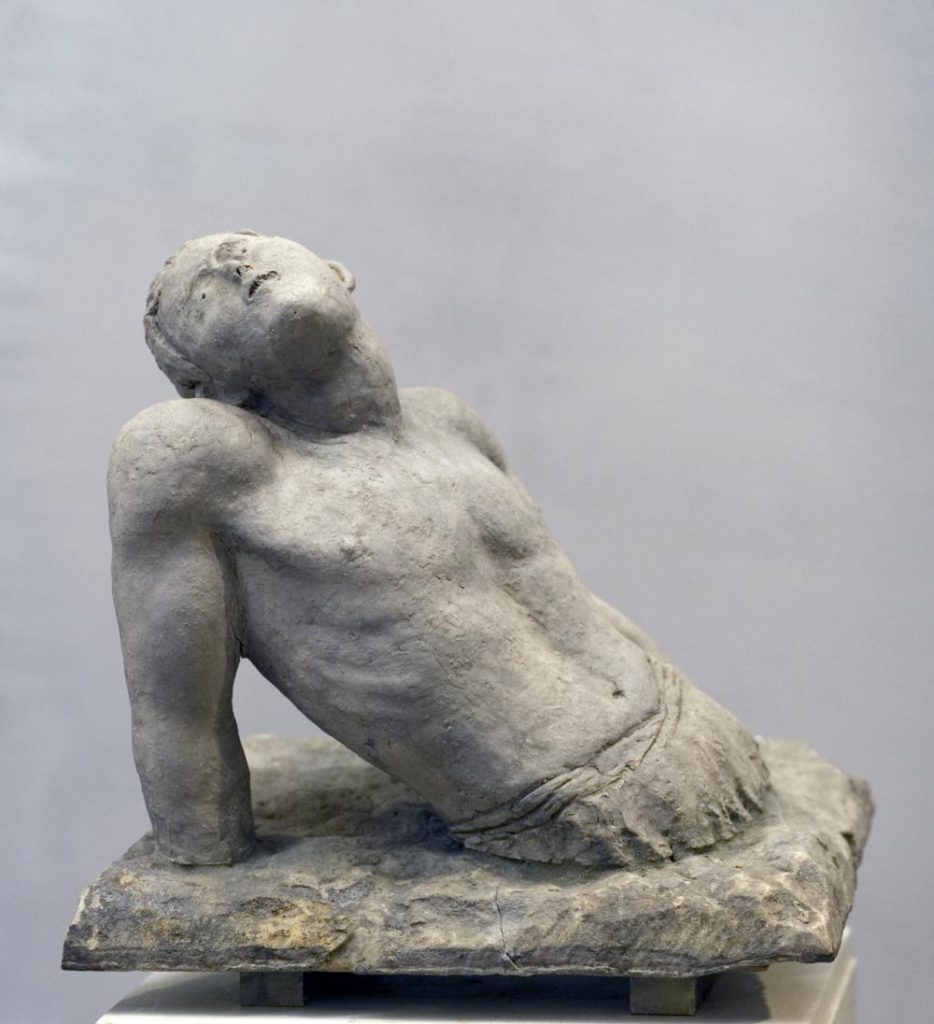
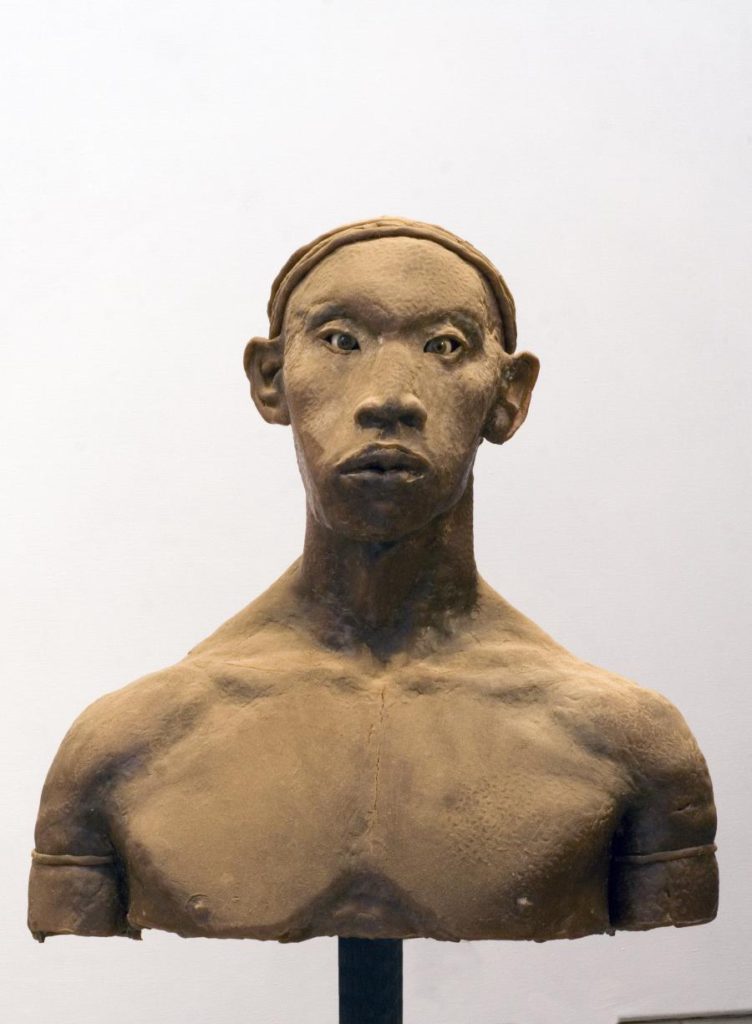 he thought: “All right, it doesn’t really matter. If he cares for me, gives me roles and pays my bills…” In my painting Nijinsky looks rather dejected. He is sitting in bed and Diaghilev is standing there with some oranges he brought him. I called that painting “The Proposal”. It doesn’t look like a very happy proposal.
he thought: “All right, it doesn’t really matter. If he cares for me, gives me roles and pays my bills…” In my painting Nijinsky looks rather dejected. He is sitting in bed and Diaghilev is standing there with some oranges he brought him. I called that painting “The Proposal”. It doesn’t look like a very happy proposal.
Another painting, “Le Mariage avec Dieu”, is about Nijinsky’s last performance in St.Moritz. It shows him naked and Romola in a nice dress with pearls. Both are flying over the Swiss mountain landscape. Romola is trying to reach Nijnsky but he is floating away from her arms.
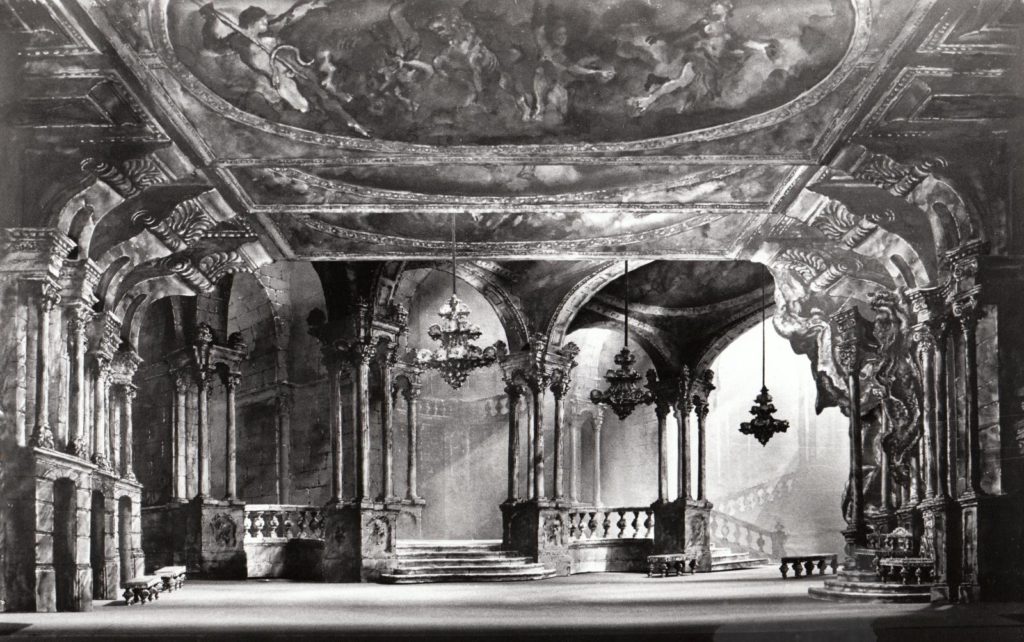 Six paintings are already finished but I’m still continuing. The most beautiful painting, a very tall narrow one, depicts Nijinsky visiting the Acropolis in Athens in the company of Bakst. Nijinsky never was in Greece but I made them going into the Propylaea.
Six paintings are already finished but I’m still continuing. The most beautiful painting, a very tall narrow one, depicts Nijinsky visiting the Acropolis in Athens in the company of Bakst. Nijinsky never was in Greece but I made them going into the Propylaea.
I always had the feeling that if I had known Nijinsky I could have been very well with him. That I would have understood him.
In August 2016 Astrid van Leeuwen released the book “Toer van Schayk: danser, choreograf en kustenaar (“Toer van Schayk: dancer, choreograph and artist”). It is a hardcover, written in Dutch.
(The interview has been edited for clarity.)
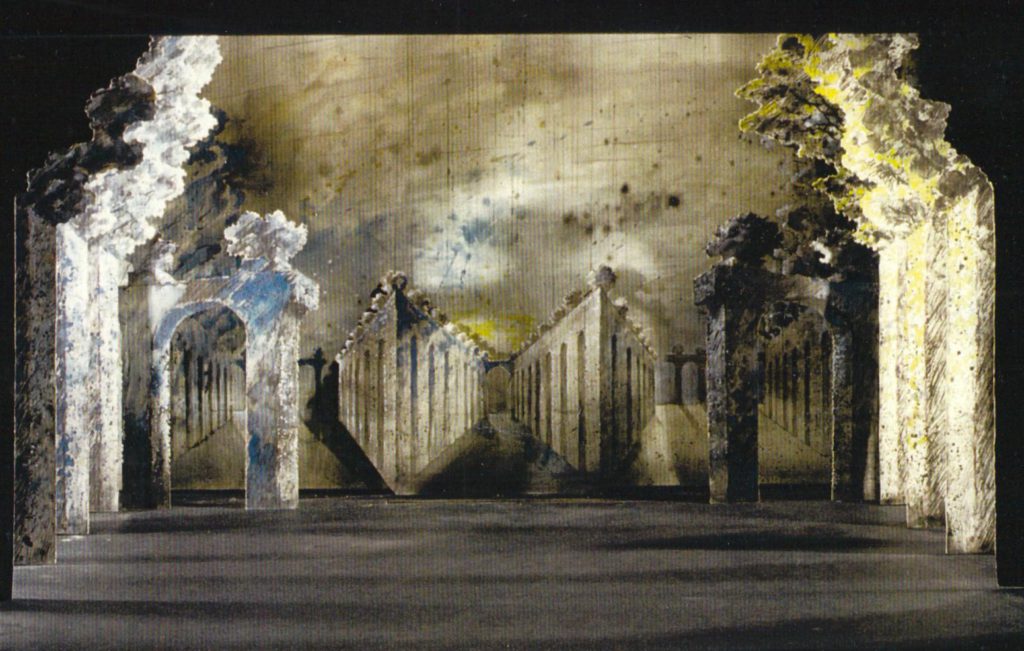
| Links: | Website of Dutch National Ballet | |
| Website of Toer van Schayk | ||
| Video “Toer van Schayk – A Great Choreographer and Artist” | ||
| Photos: | 1. | Toer van Schayk working on the statue of Romeo and Juliet, Dutch National Ballet © Remko Holleboom |
| 2. | Hans van Manen, Rudi van Dantzig and Toer van Schayk, Dutch National Ballet © Dutch National Ballet | |
| 3. | Young Gyu Choi and Qian Liu, “Episodes van Fragmenten” by Toer van Schaky, Dutch National Ballet 2016 © Hans Gerritsen | |
| 4. | Young Gyu Choi and Qian Liu, “Episodes van Fragmenten” by Toer van Schaky, Dutch National Ballet 2016 © Hans Gerritsen | |
| 5. | Michael Mouratch (piano), Jeroen van der Wel (violin) and Qian Liu, “Episodes van Fragmenten” by Toer van Schaky, Dutch National Ballet 2016 © Hans Gerritsen | |
| 6. | Young Gyu Choi and Anatole Babenko, rehearsal of “Requiem”, chor.: Toer van Schayk, Dutch National Ballet 2016 © Altin Kaftira | |
| 7. | Jessica Xuan and Clemens Fröhlich, rehearsal of “Requiem”, chor.: Toer van Schayk, Dutch National Ballet 2016 © Altin Kaftira | |
| 8. | Young Gyu Choi, “Requiem” by Toer van Schayk, Dutch National Ballet 2016 © Hans Gerritsen | |
| 9. | Aya Okumura and Clemens Fröhlich, “Requiem” by Toer van Schayk, Dutch National Ballet 2016 © Hans Gerritsen | |
| 10. | Ensemble, “Requiem” by Toer van Schayk, Dutch National Ballet 2016 © Hans Gerritsen | |
| 11. | Ensemble, “The Nutcracker and the Mouse King” by Toer van Schayk and Wayne Eagling, Dutch National Ballet © Angela Sterling | |
| 12. | Ensemble, “The Nutcracker and the Mouse King” by Toer van Schayk and Wayne Eagling, Dutch National Ballet © Angela Sterling | |
| 13. | Eline van der Korst (Clara Staalboom), “The Nutcracker and the Mouse King” by Toer van Schayk and Wayne Eagling, Dutch National Ballet © Angela Sterling | |
| 14. | Cristian Mathot (Frits Staalboom) and Eline van der Korst (Clara Staalboom), “The Nutcracker and the Mouse King” by Toer van Schayk and Wayne Eagling, Dutch National Ballet © Angela Sterling | |
| 15. | James Stout (Mouse King), “The Nutcracker and the Mouse King” by Toer van Schayk and Wayne Eagling, Dutch National Ballet © Angela Sterling | |
| 16. | James Stout (Mouse King) and Hanna Hvas (Clara Staalboom), “The Nutcracker and the Mouse King” by Toer van Schayk and Wayne Eagling, Dutch National Ballet © Angela Sterling | |
| 17. | Ensemble, “The Nutcracker and the Mouse King” by Toer van Schayk and Wayne Eagling, Dutch National Ballet © Angela Sterling | |
| 18. | James Stout (Mouse King), Igone de Jongh (Clara Staalboom), Jared Wainford Wright (Nutcracker) and ensemble, “The Nutcracker and the Mouse King” by Toer van Schayk and Wayne Eagling, Dutch National Ballet © Angela Sterling | |
| 19. | Roman Artyushkin (Faun), “The Nutcracker and the Mouse King” by Toer van Schayk and Wayne Eagling, Dutch National Ballet © Angela Sterling | |
| 20. | Maria Chugai (Chinese Dance), “The Nutcracker and the Mouse King” by Toer van Schayk and Wayne Eagling, Dutch National Ballet © Angela Sterling | |
| 21. | James Stout (Mouse King), Igone de Jongh (Clara Staalboom), Casey Herd (Drosselmeyer) and Jared Wainford Wright (Nutcracker), “The Nutcracker and the Mouse King” by Toer van Schayk and Wayne Eagling, Dutch National Ballet © Angela Sterling | |
| 22. | Ensemble, “The Reversibility of Rust” by Toer van Schayk, Dutch National Ballet © Angela Sterling | |
| 23. | Cedric Ygnace and Anu Viheriäranta, “The Reversibility of Rust” by Toer van Schayk, Dutch National Ballet © Angela Sterling | |
| 24. | Anatole Babenko and Nadia Yanowski, “The Reversibility of Rust” by Toer van Schayk, Dutch National Ballet © Angela Sterling | |
| 25. | Cedric Ygnace and Anu Viheriäranta, “The Reversibility of Rust” by Toer van Schayk, Dutch National Ballet © Angela Sterling | |
| 26. | Rubinald Rofino Pronk, “Spiegels Bevriezend” by Toer van Schayk, Dutch National Ballet © Angela Sterling | |
| 27. | Rubinald Rofino Pronk and Natalia Hoffman, “Spiegels Bevriezend” by Toer van Schayk, Dutch National Ballet © Angela Sterling | |
| 28. | Mathieu Gremillet and Asta Bazeviciute, “Spiegels Bevriezend” by Toer van Schayk, Dutch National Ballet © Angela Sterling | |
| 29. | Rubinald Rofino Pronk and Natalia Hoffman, “Spiegels Bevriezend” by Toer van Schayk, Dutch National Ballet © Angela Sterling | |
| 30. | Timothy van Poucke and Conor Walmsley, “Ephebe” by Toer van Schayk, Junior Company of Dutch National Ballet © Antoinette Mooy | |
| 31. | “Nijinsky posing for Aristide Maillol“ by Toer van Schayk © Marie-Jeanne van Hövell tot Westerflier | |
| 32. | Toer van Schayk © Jochem Jurgens | |
| 33. | “The Arresting Team” by Toer van Schayk © Marie-Jeanne van Hövell tot Westerflier | |
| 34. | “Noodweer” (meaning: apocalyptically heavy weather) by Toer van Schayk © Marie-Jeanne van Hövell tot Westerflier | |
| 35. | Set design for “The Nutcracker and the Mouse King” by Toer van Schayk, chor.: Toer van Schayk and Wayne Eagling © Marie-Jeanne van Hövell tot Westerflier | |
| 36. | Costume for “Cinderella” by Toer van Schayk © Marie-Jeanne van Hövell tot Westerflier | |
| 37. | Stage rehearsal of “The Nutcracker and the Mouse King”, chor.: Toer van Schayk and Wayne Eagling, set and costume design by Toer van Schayk © Marie-Jeanne van Hövell tot Westerflier | |
| 38. | Toer van Schayk working on “Olympic Swimmer” © Marie-Jeanne van Hövell tot Westerflier | |
| 39. | “Midnight” by Toer van Schayk © Marie-Jeanne van Hövell tot Westerflier | |
| 40. | “Warrior” by Toer van Schayk © Marie-Jeanne van Hövell tot Westerflier | |
| 41. | Maquette of “Swan Lake” by Toer van Schayk © Marie-Jeanne van Hövell tot Westerflier | |
| 42. | Maquette of “Brahms-Schönberg Quartet” by Toer van Schayk © Marie-Jeanne van Hövell tot Westerflier | |
| Editing: | Anna Antongiorgi |
